Last time I talked about how I got a chance to ride the amphibious assault ship USS America from San Diego to San Pedro as part of LA Fleet Week 2016. I decided to split the post, due to length. (I took a lot of pictures.) When I left off, I had just gotten kicked off the flight deck, as they were about to start bringing planes aboard.
In the hangar deck, the ship's security detachment was showing off some of their guns. Unfortunately, I didn't get any pictures, but I did get to handle one of their shotguns, an M9, an M14 and an M16. They all felt pretty much like I expected, and I remembered the M16 manual well enough to run the controls. One of the more interesting observations was that the guy I was with (another Iowa volunteer) and I clearly had gun safety training, while the contingent of potential recruits we were next to clearly did not. It was enough to make one a bit nervous. I was also disappointed that I didn't get to handle the M240 machine gun they had out.
A little bit later, we watched from the hangar as a contingent of airplanes were flown aboard to be displayed during Fleet Week.

A V-22 Osprey landing aboard1
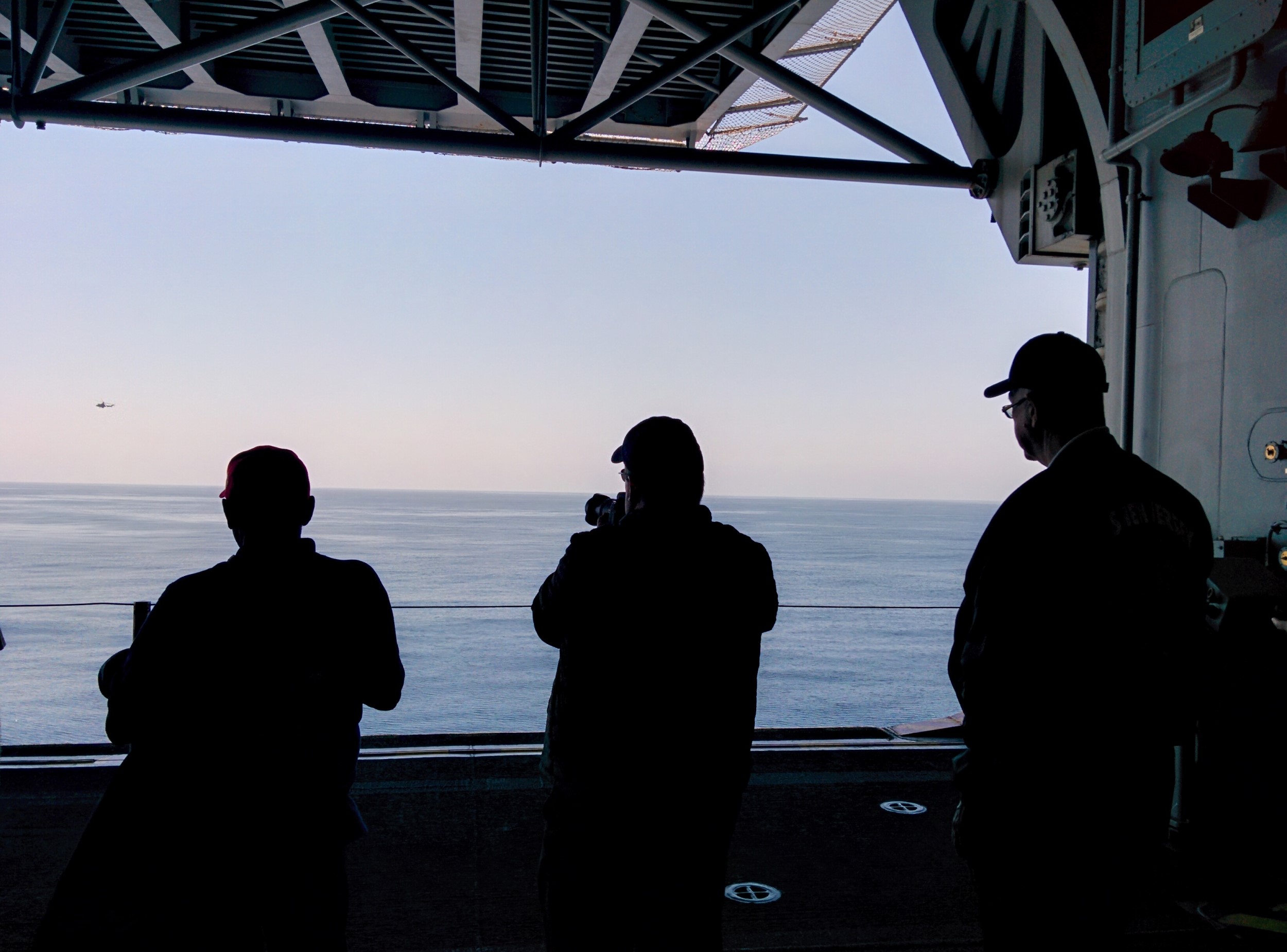
Watching air operations from the elevator well of the hangar
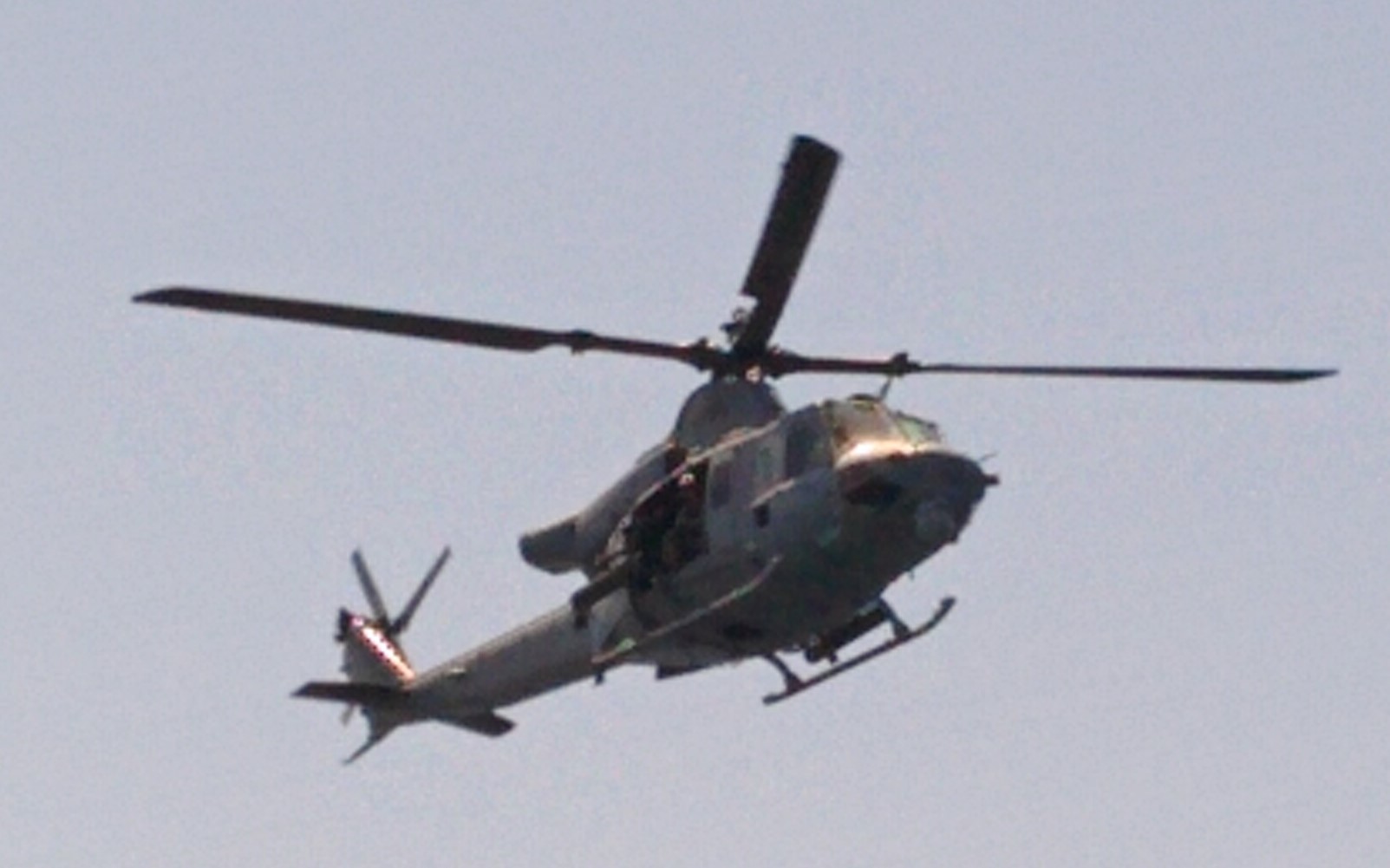
A UH-1Y Venom flying nearby
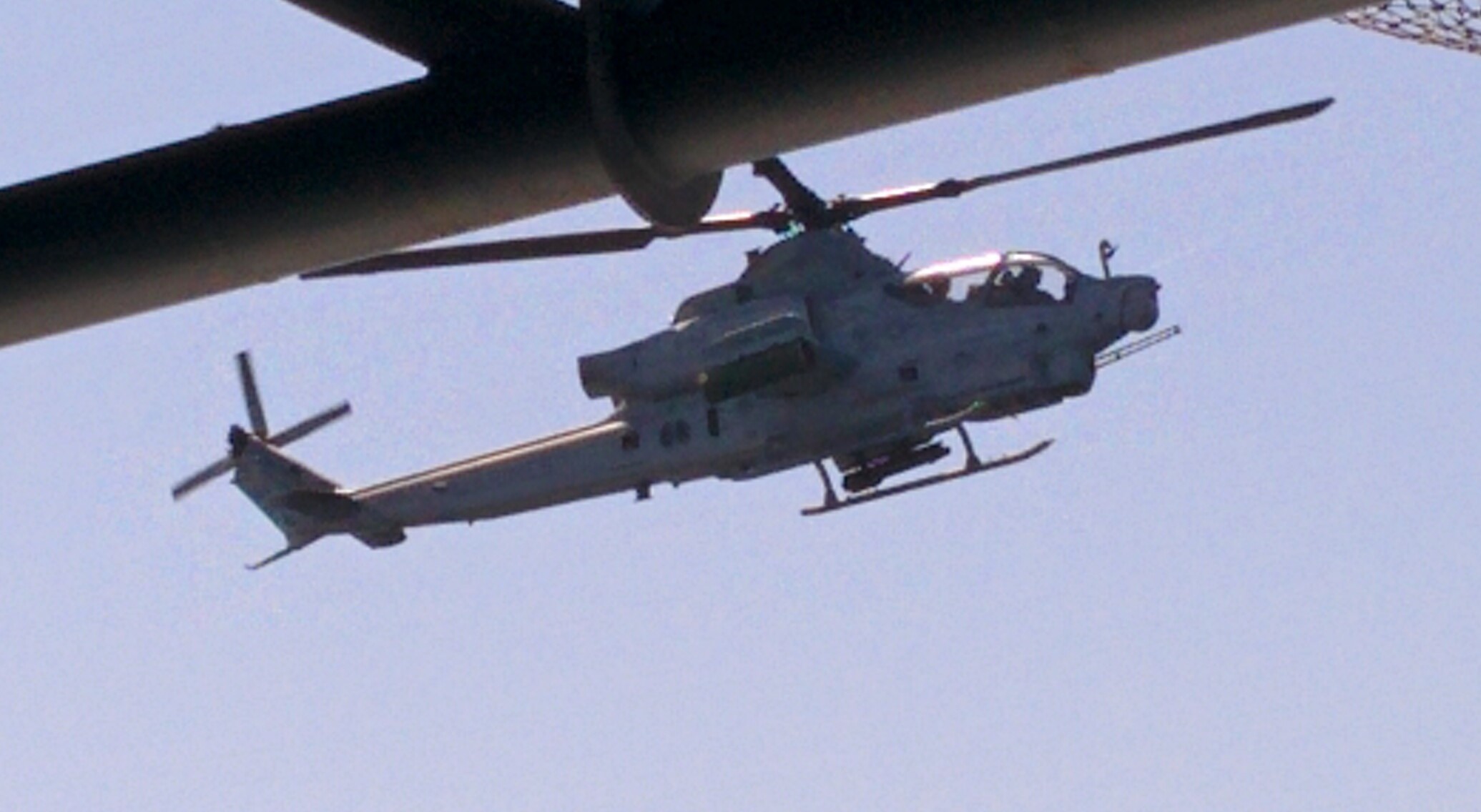
An AH-1Z Viper about to land
After that, it was off to lunch. We first went back to the wardroom, but they were having a briefing, so we got sent down to the crew's mess, where I finally caught up to my group. I ended up getting told to cut in line, which the crew was very gracious about. Actually, America's crew were fantastic all day, if a bit disorganized at handling visitors, and I'm thankful to them for putting up with us.
We saw a fair bit of the inside of the ship throughout the day, although I didn't get any pictures of it. It was a lot like Iowa, although the corridors were slightly wider. I was one of the few people who could keep up with the crew, because almost everyone else was either older or unused to moving inside warships.
We also got shown the Combat Information Center (CIC). I obviously wasn't allowed to take pictures, but it was very cool seeing the nerve center of the ship, the space from which all operations are coordinated.
Once all of the aircraft were secured, we were let out on deck, and got to look them over. It was really cool, particularly as the crew-to-visitor ratio was a lot higher than at a typical airshow.
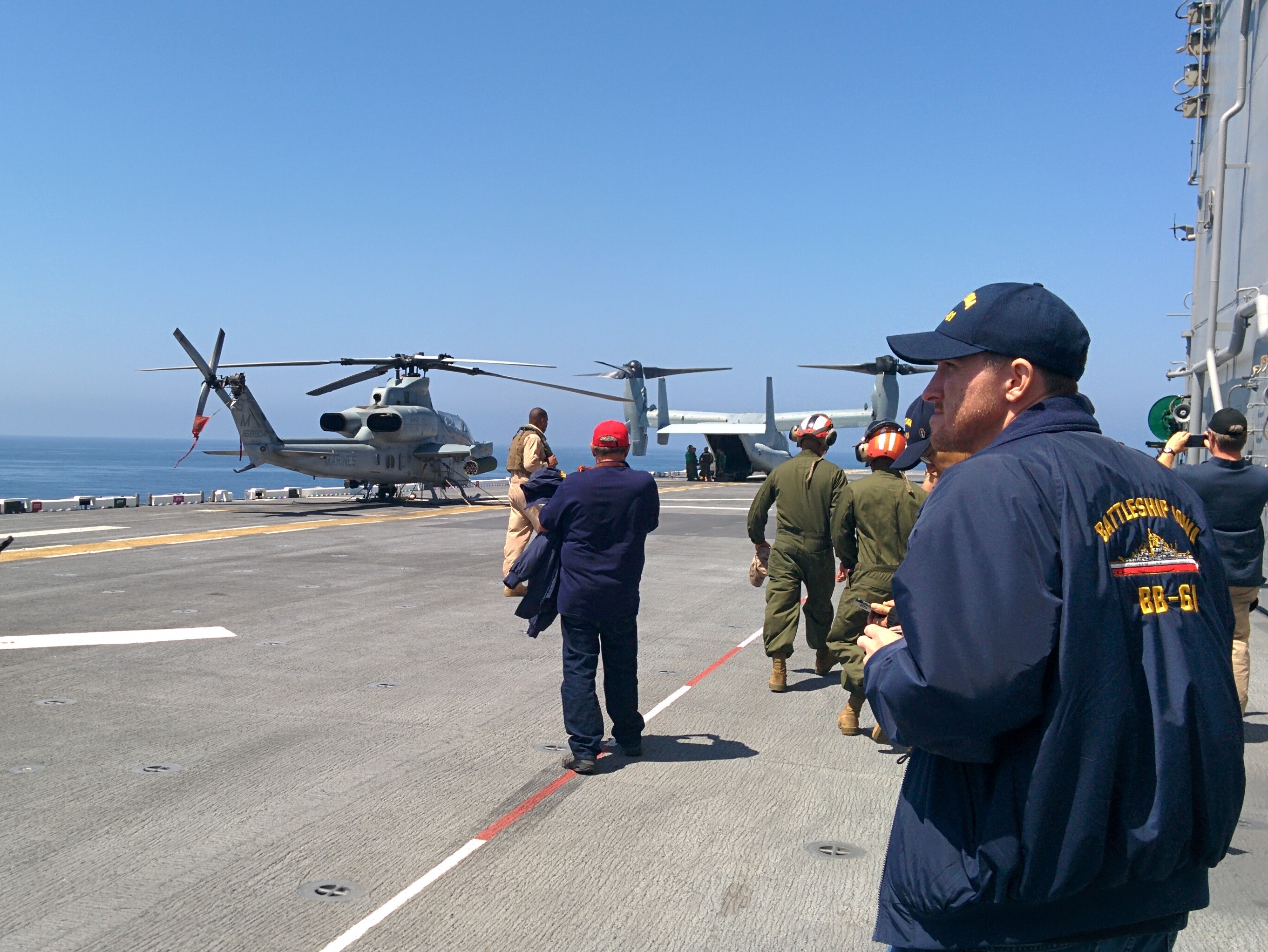
On deck with the airplanes
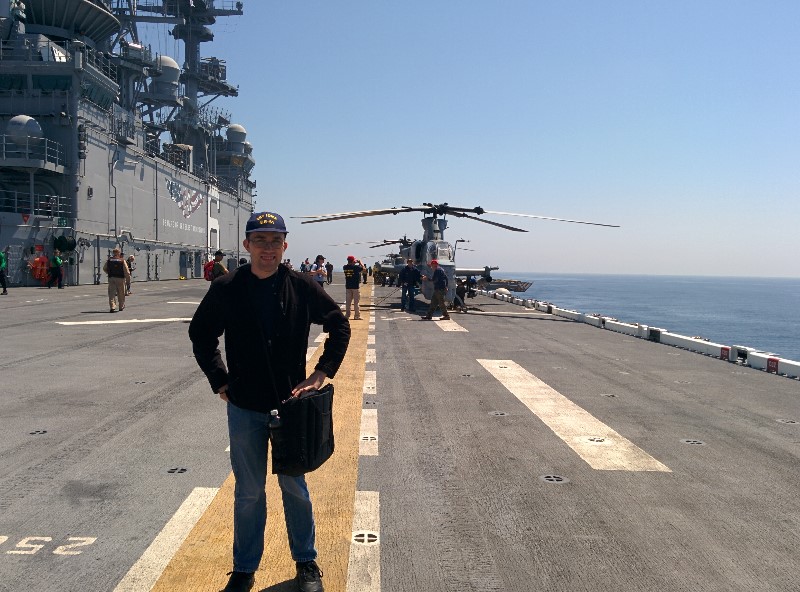
Me on the deck
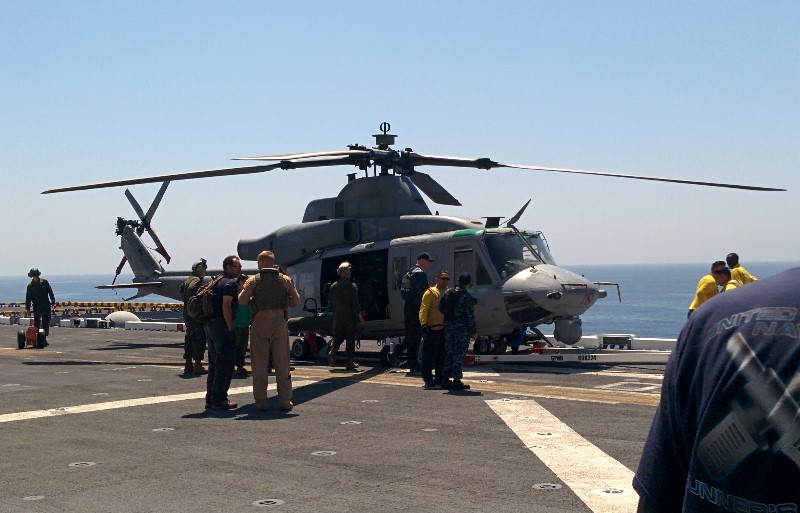
A UH-1Y Venom
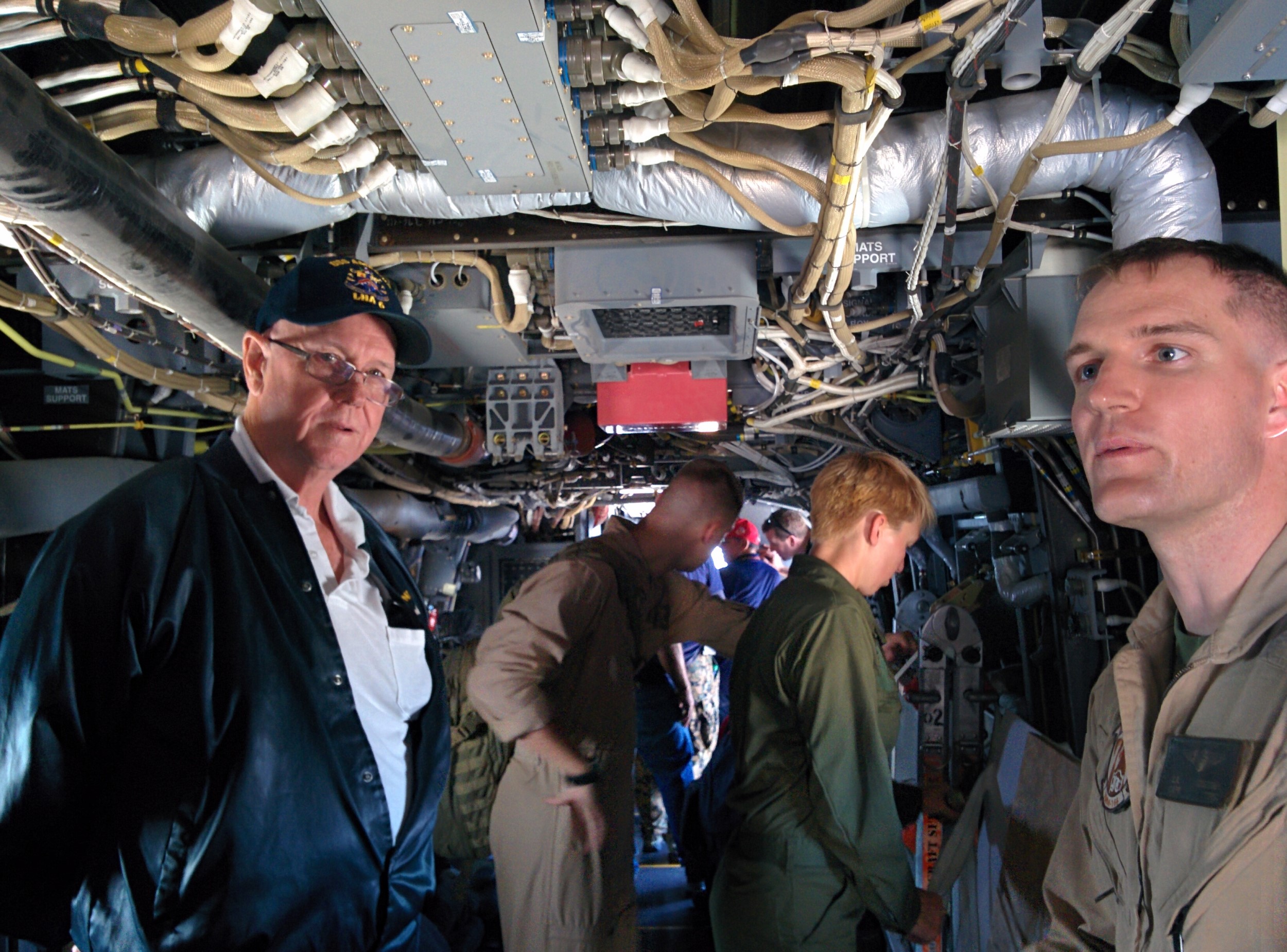
Inside the V-22.
The Marine pilot (on the right) was so passionate about his airplane, I expect there are people who are planning to fly the V-22 today because of him. While military personnel either love or hate their equipment, he went above and beyond in praising it. He'd come from the AV-8B, and told me that it was his first airplane without an ejection seat, but that he felt safer in the V-22 than he did in anything he'd flown before, even with 20 guys in the back.
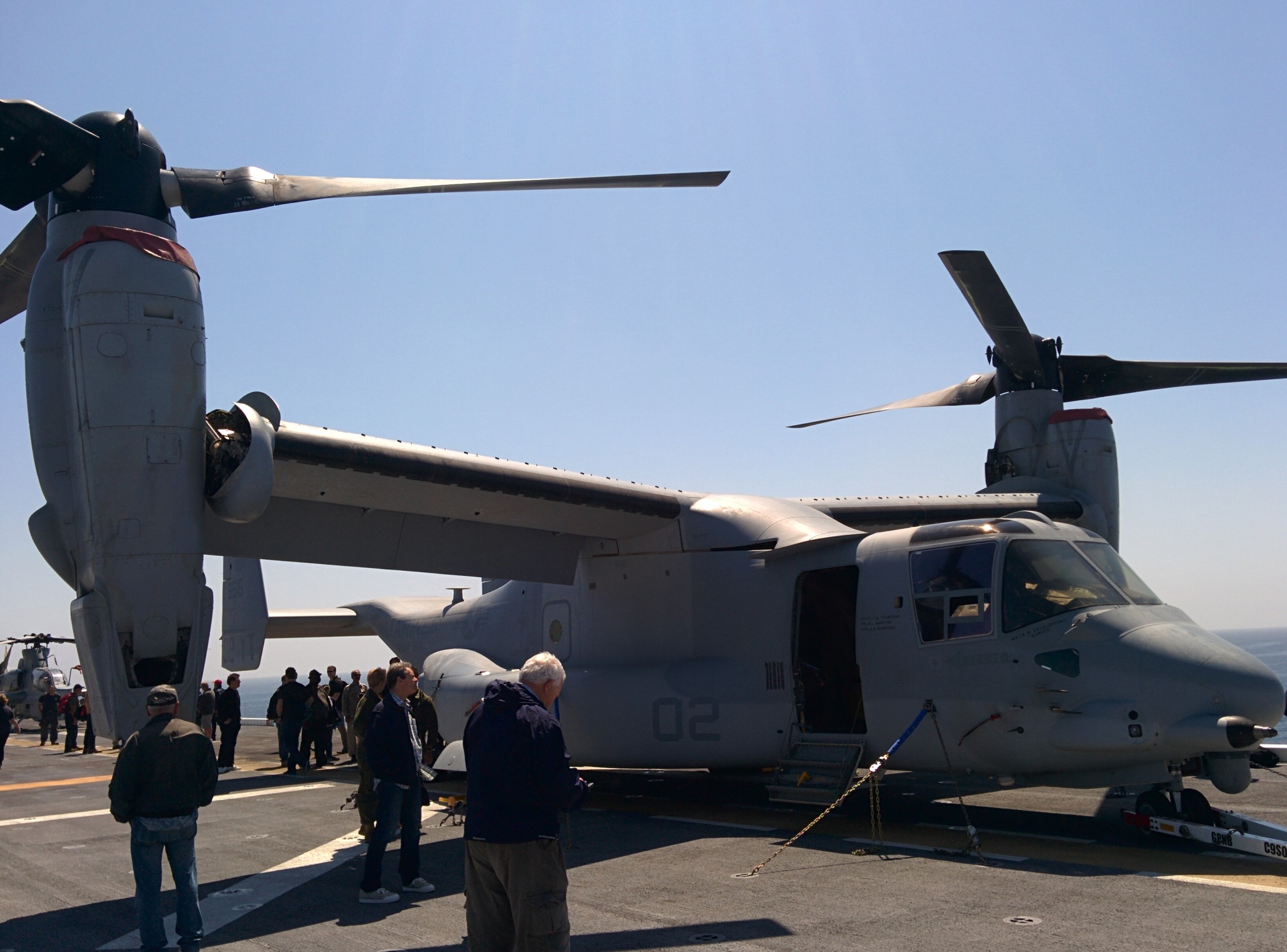
The front of the V-22
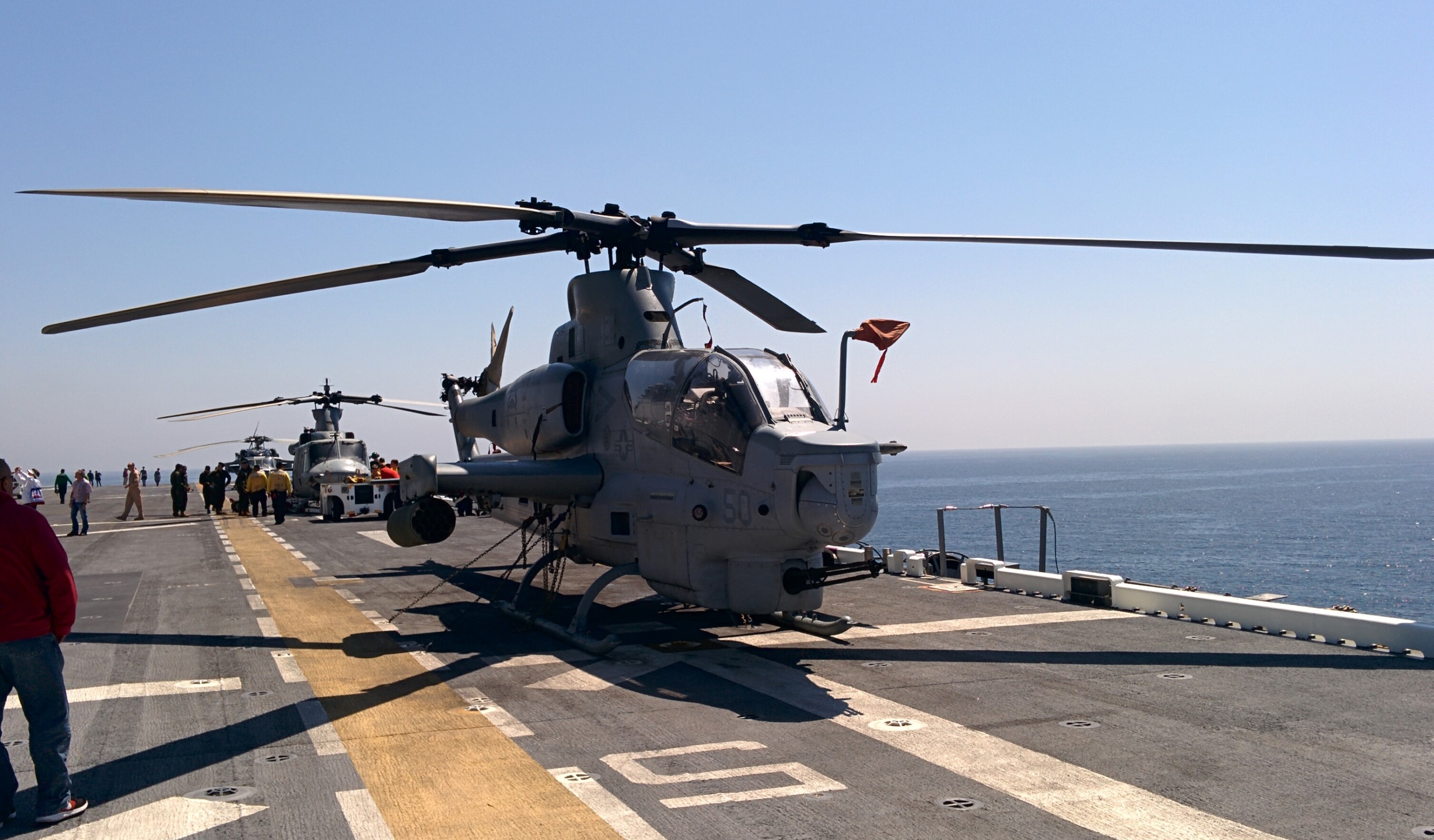
An AH-1Z Viper
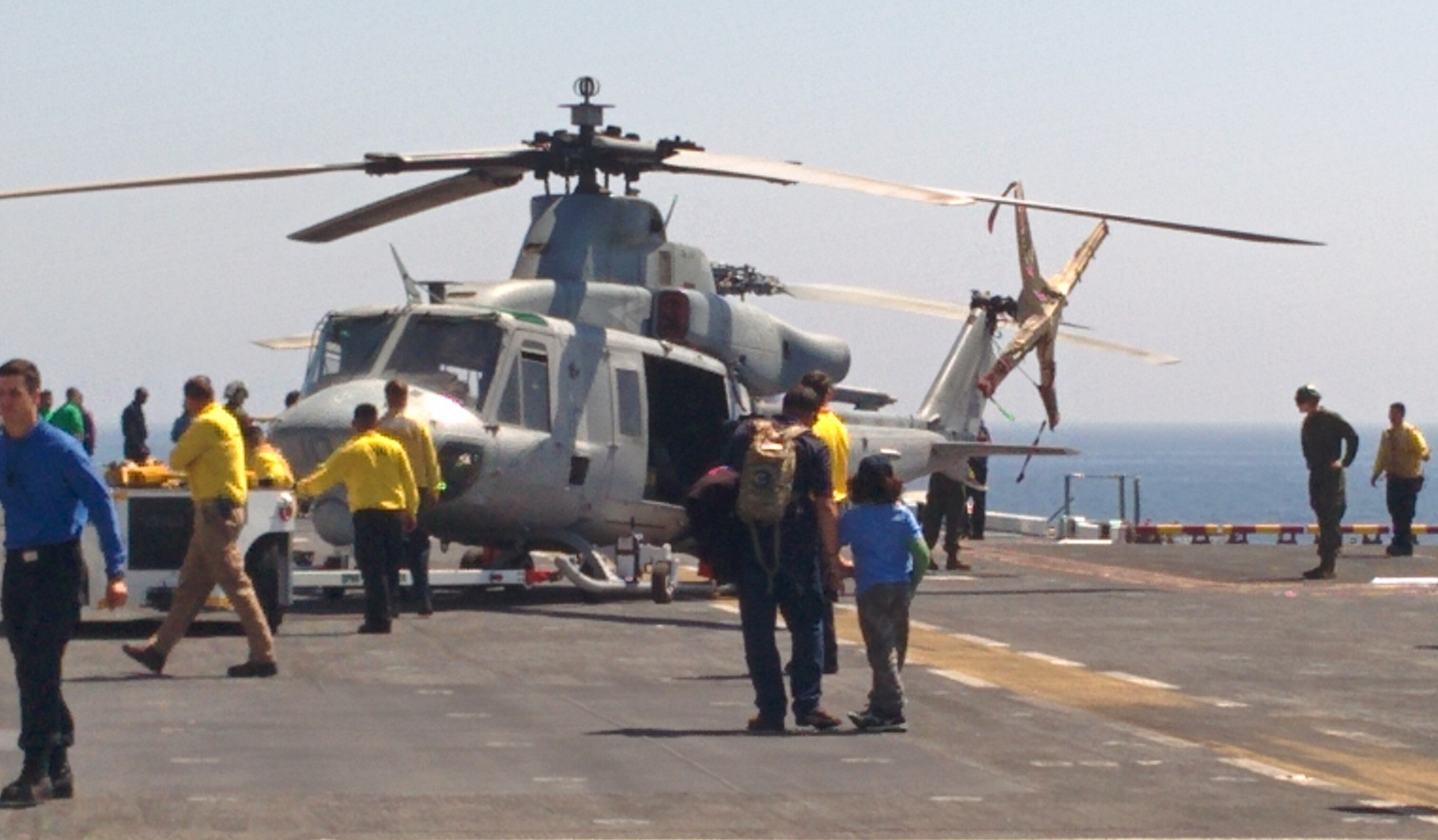
The UH-1Y being moved onto the elevator
After a while on deck, we headed up into the island, to take a look around up there. We got to see the Primary Flight Control (PriFly), the main control center for air operations on deck.
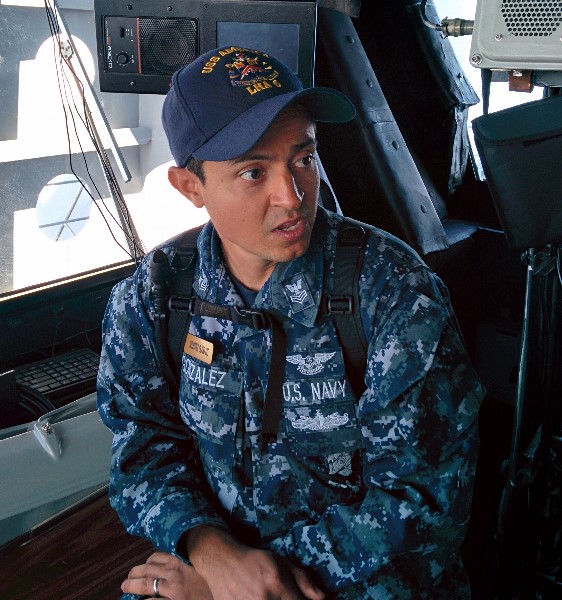
My excellent guide, PO1 Gonzales, in the PriFly
After that, I roamed the island, until I got to the flying bridge, where I spent the next two hours as we approached San Pedro.
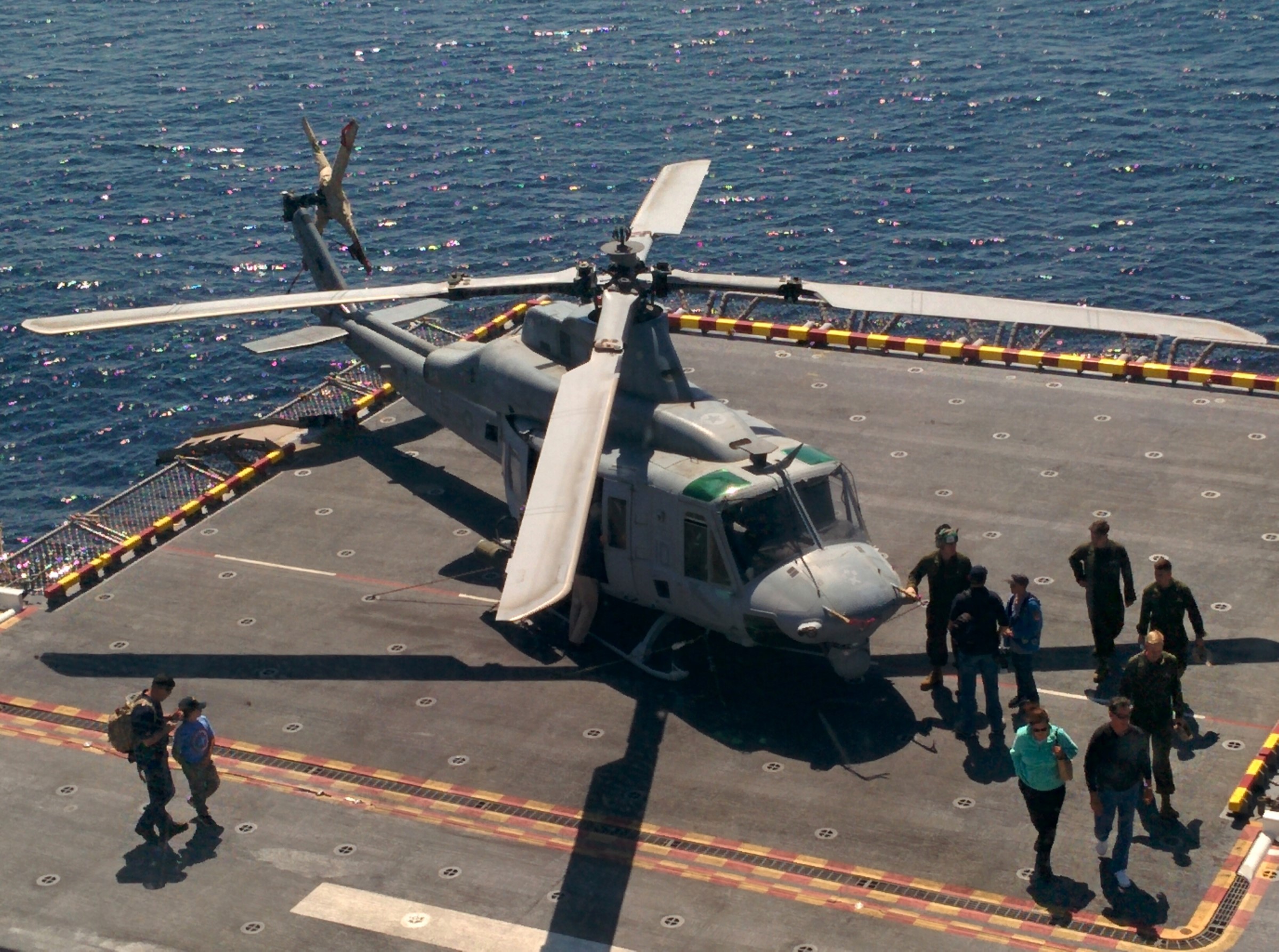
The UH-1Y on the elevator
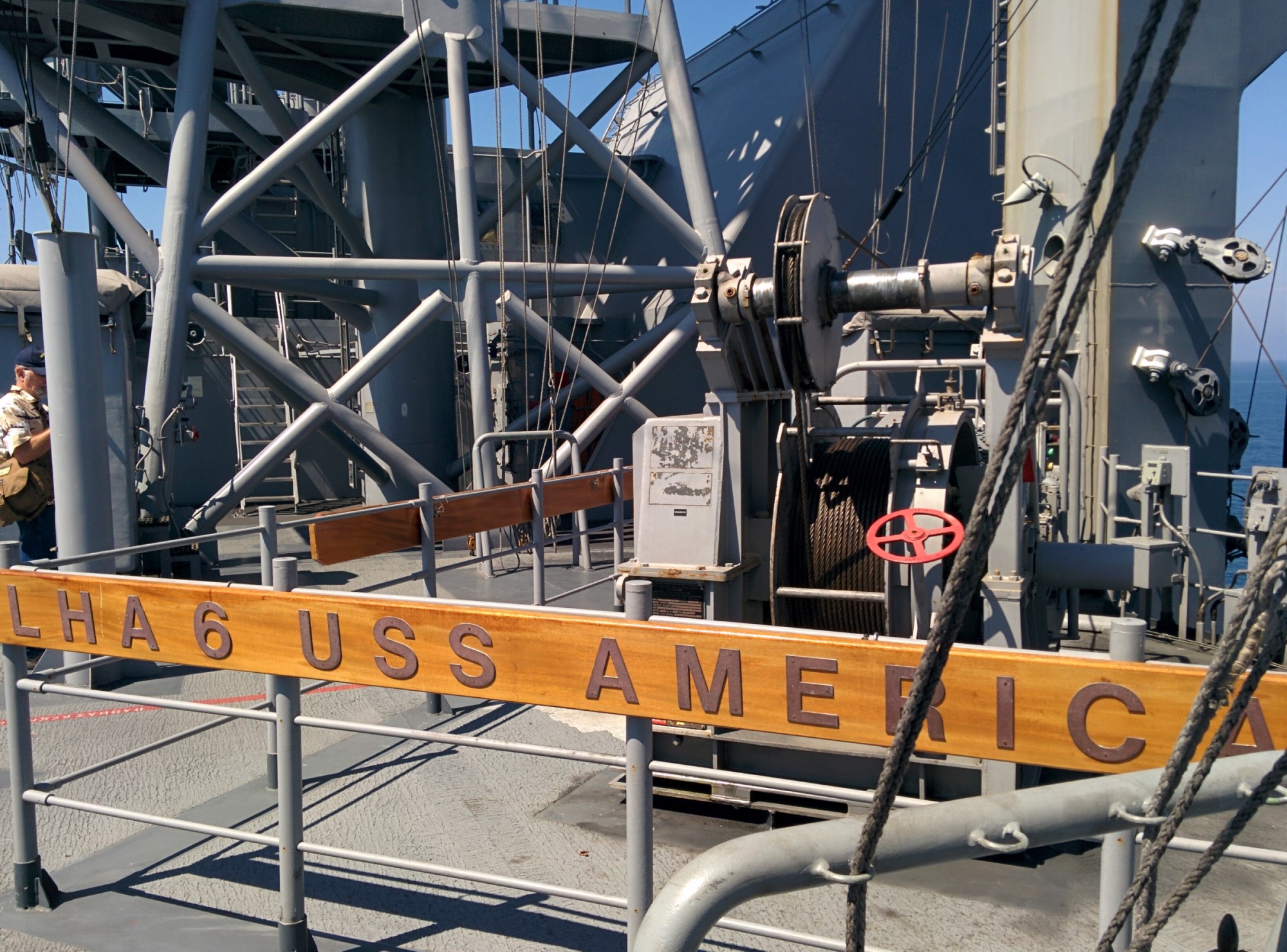
Equipment in the island
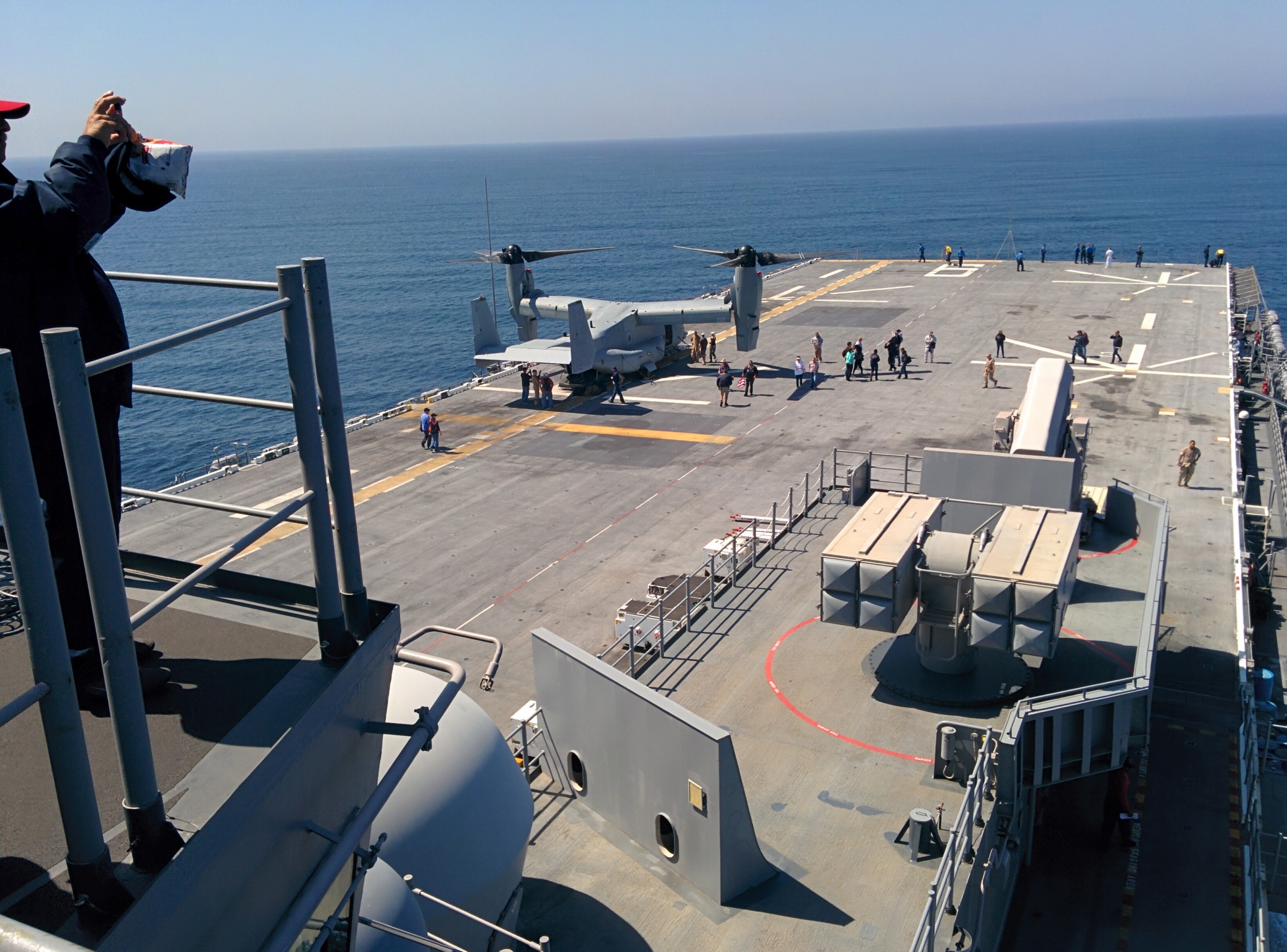
A view from the flying bridge
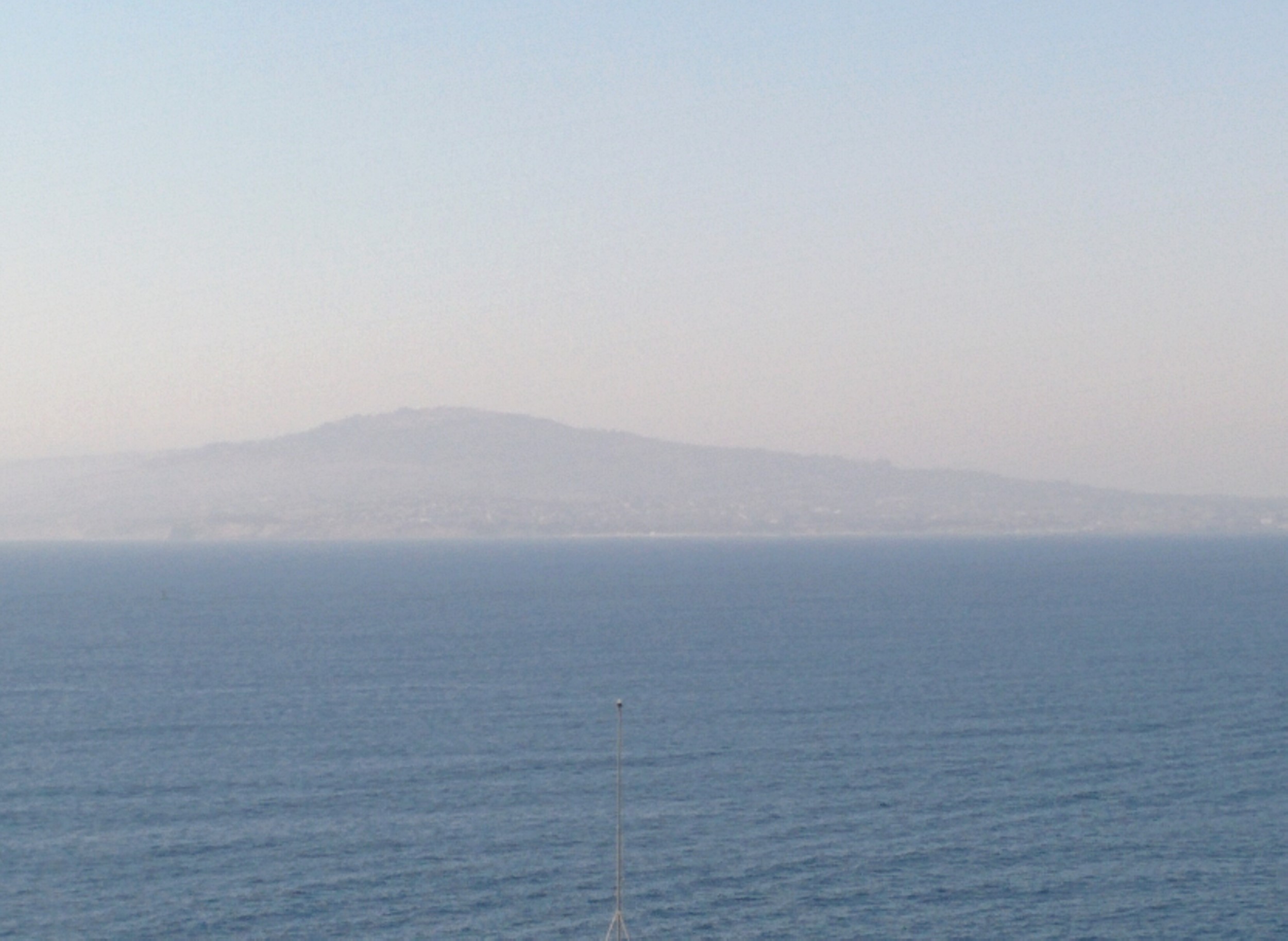
The first glimpse of San Pedro
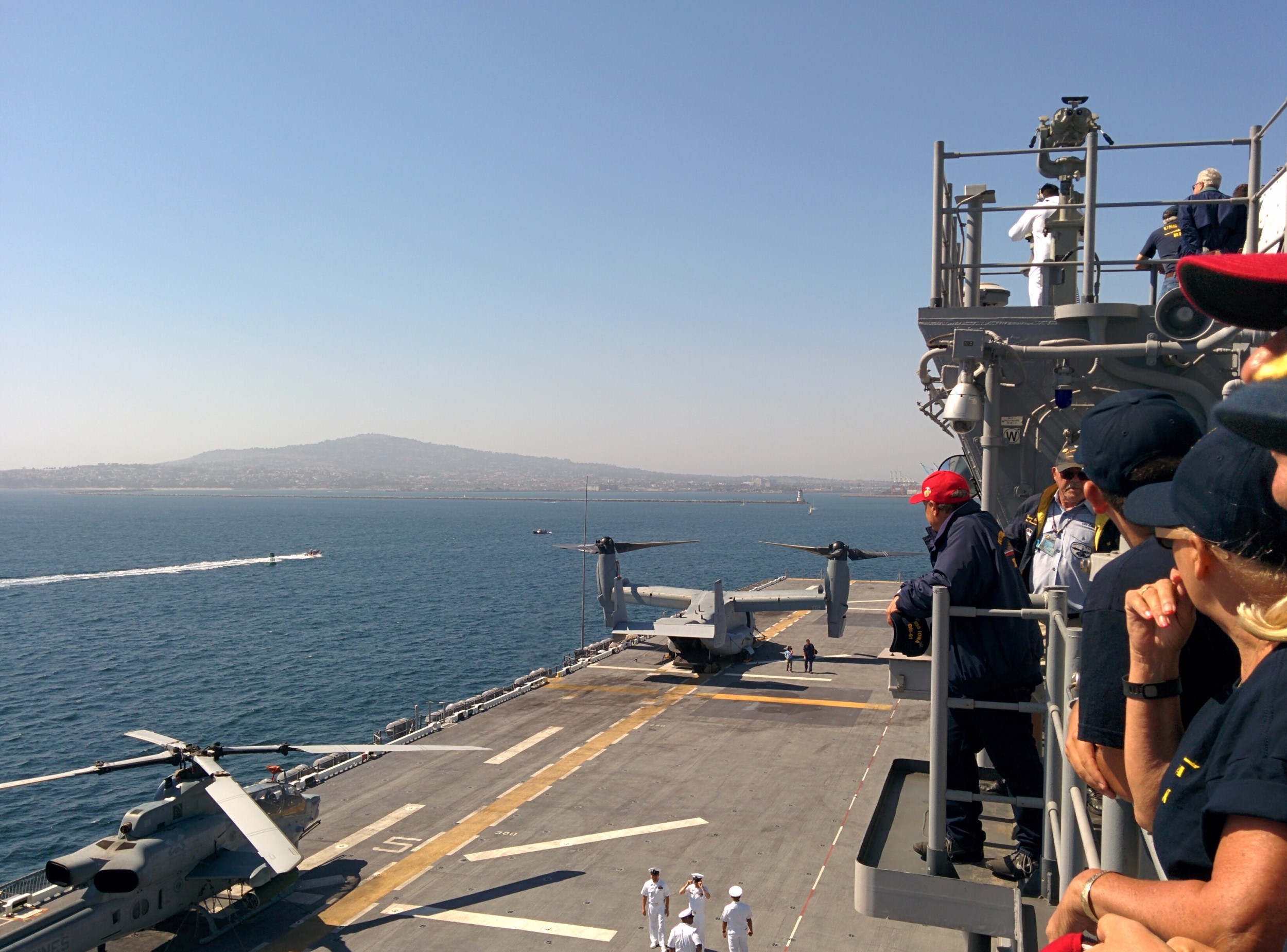
The outer edge of San Pedro harbor
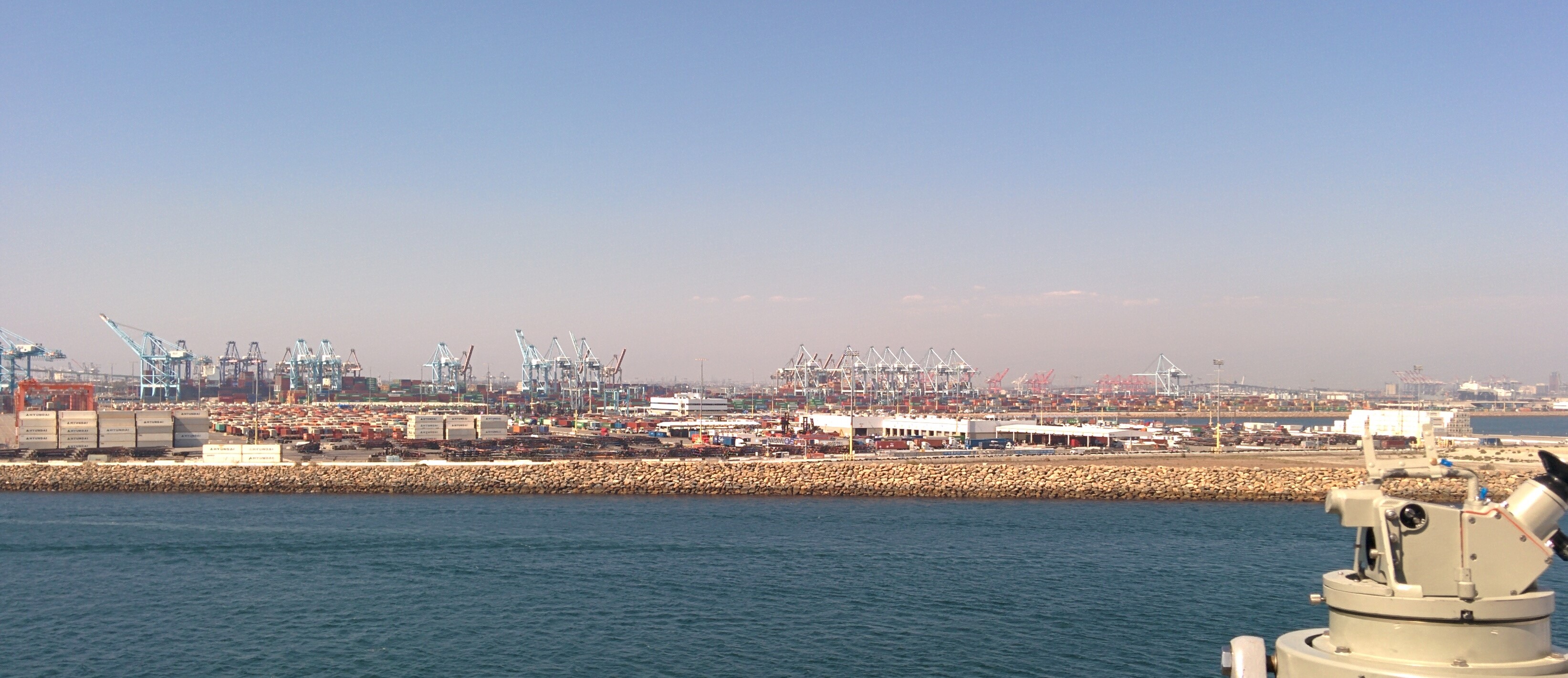
The Port of Long Beach
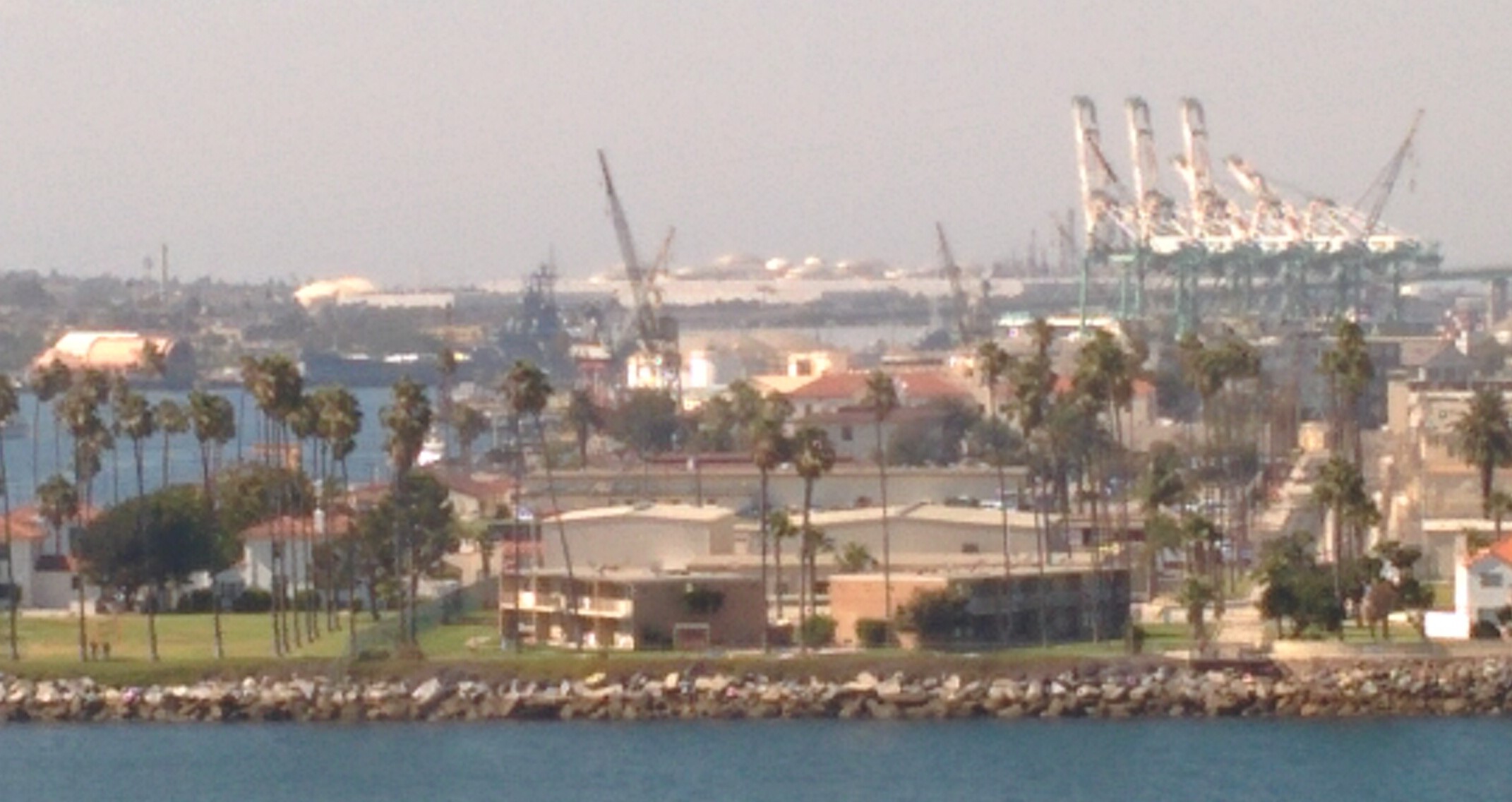
The first look at the best-looking ship in the harbor
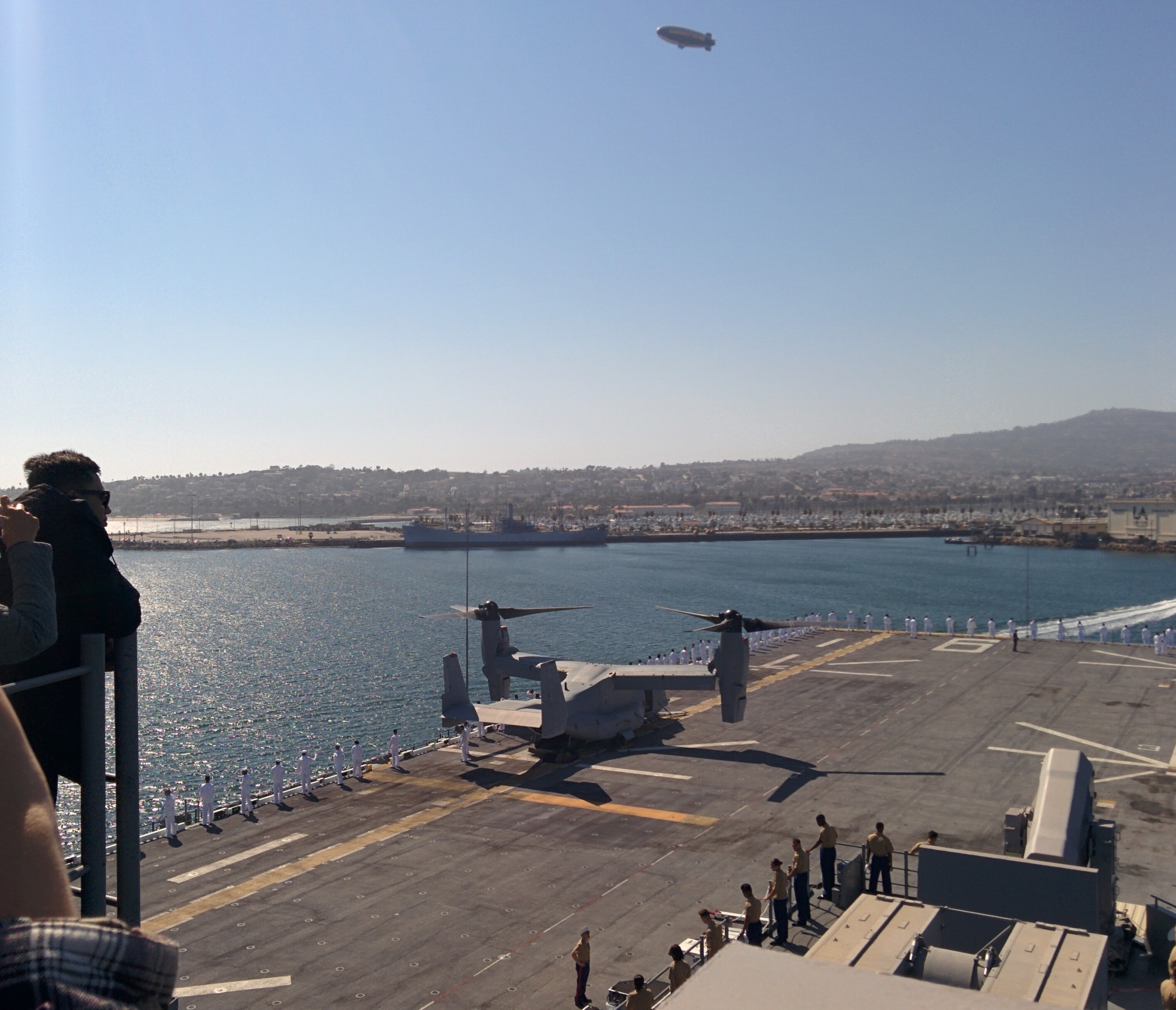
Looking west, Lane Victory in the center
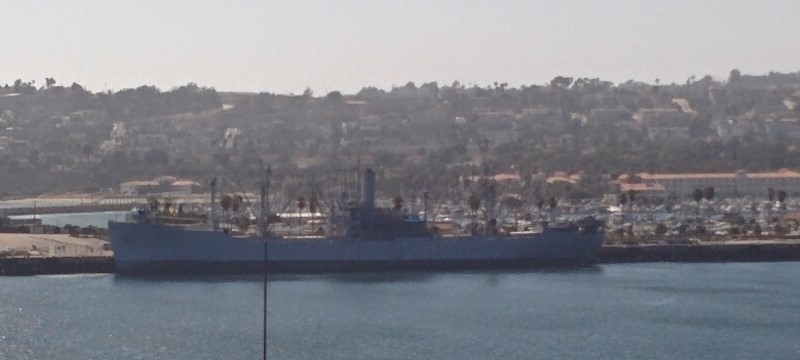
Lane Victory, a preserved WWII cargo ship
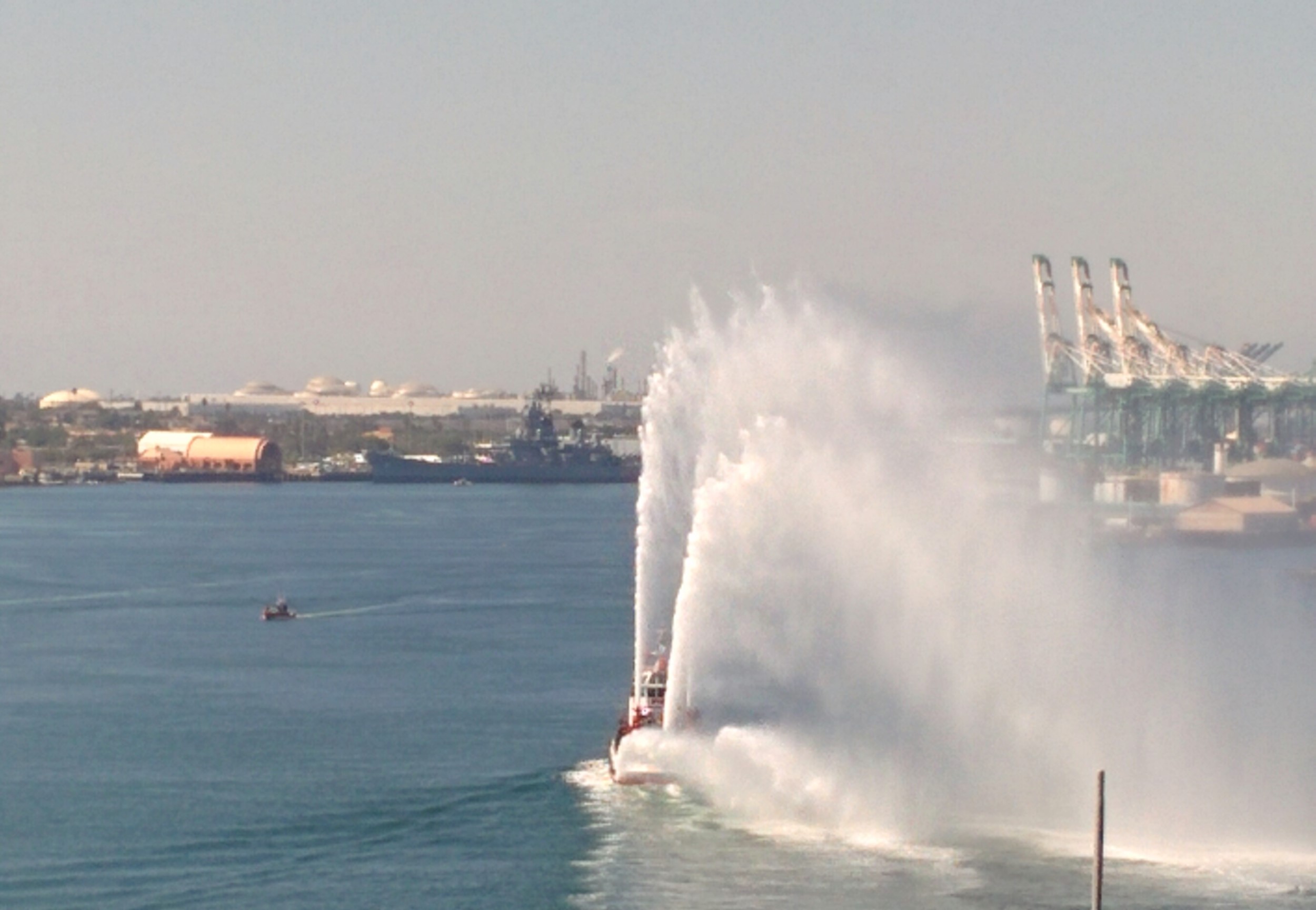
One of the fireboats that escorted us in, with Iowa
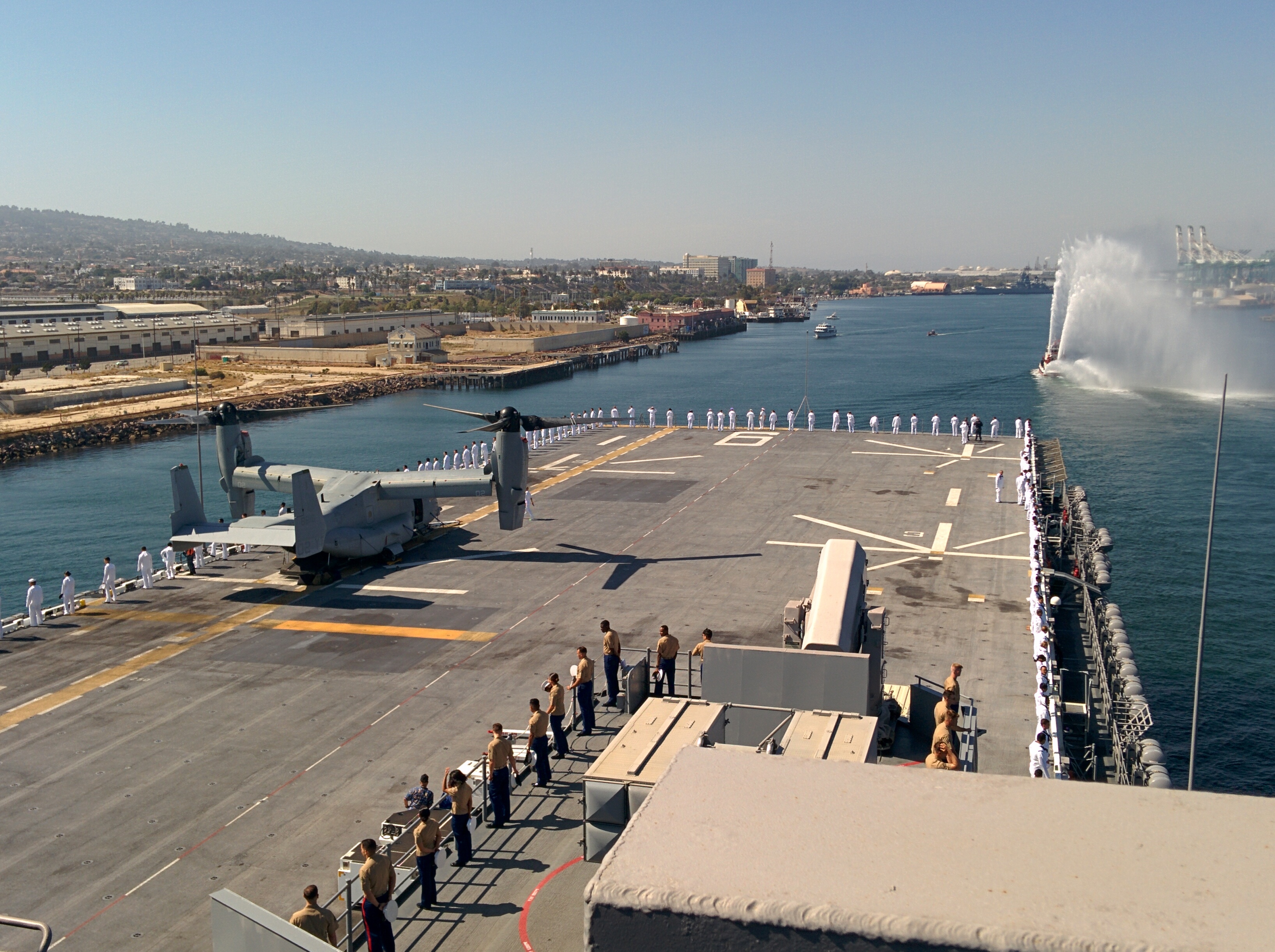
The crew of the America manning the rails
The trip into San Pedro was almost as amazing as the trip out of San Diego. Being on the flying bridge of a ship with the crew manning the rails, under the California sun... It was unreal, if a bit hot. There was a medic walking the deck, whose presence was clearly needed. One of the female Marines around the Sea Sparrow launcher collapsed and had to be taken below.
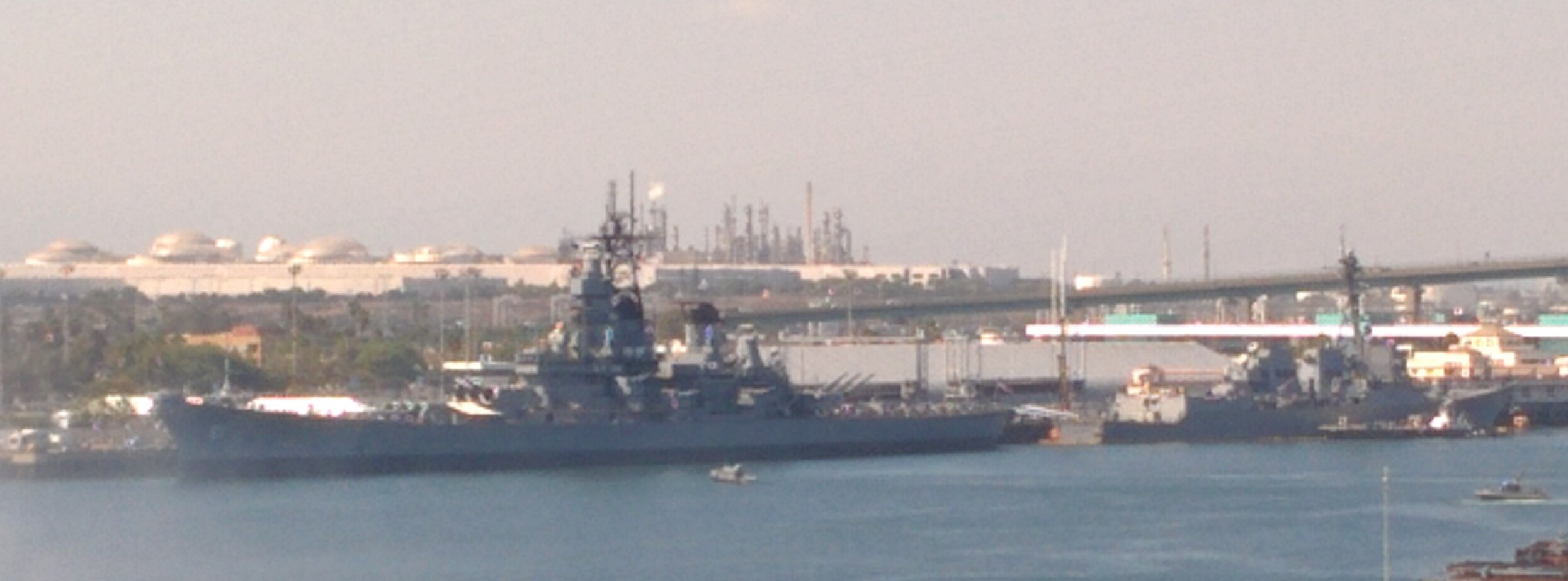
Iowa tied up next to USS Wayne E. Meyer (DDG-108)
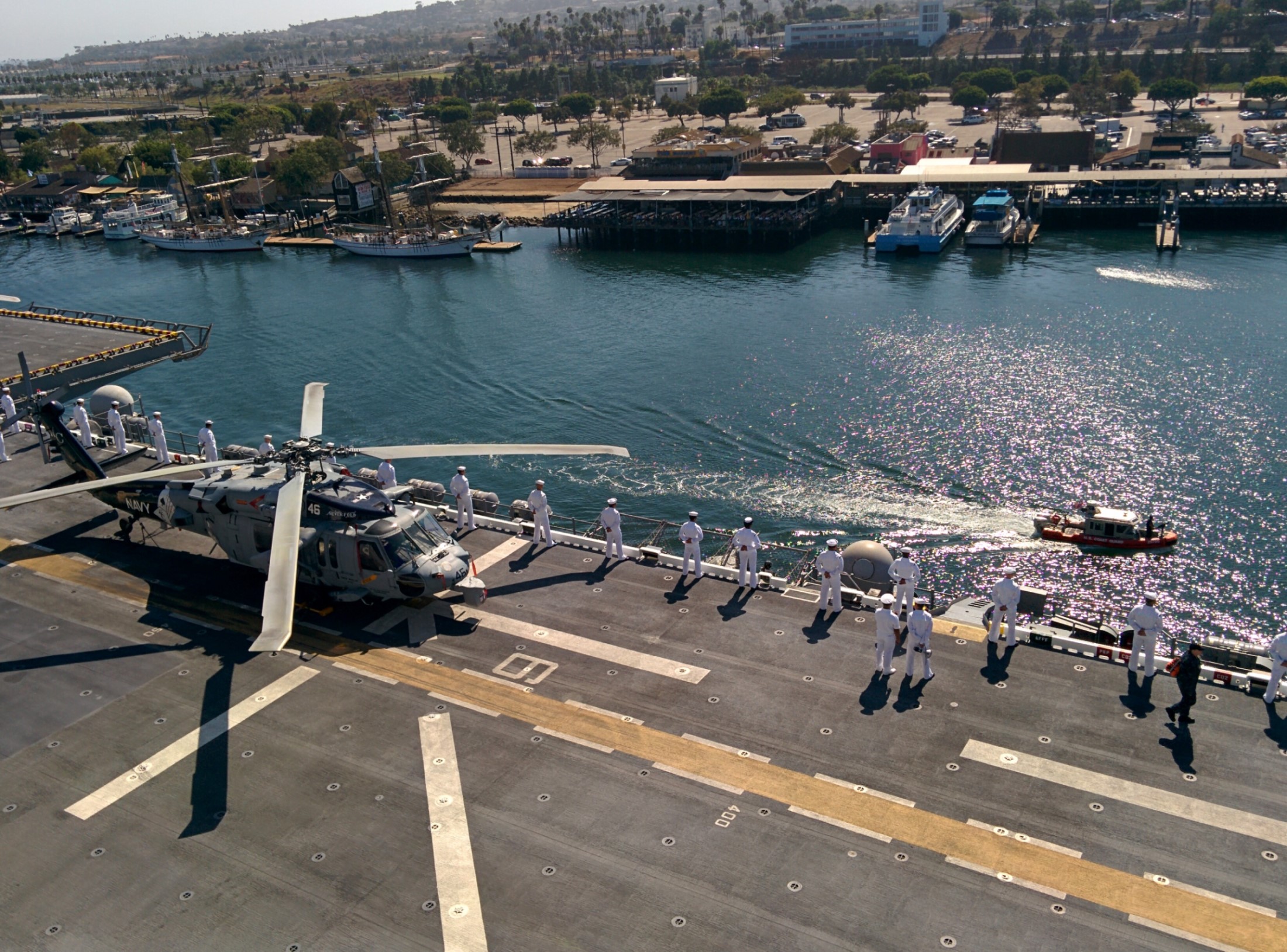
The security boat alongside America
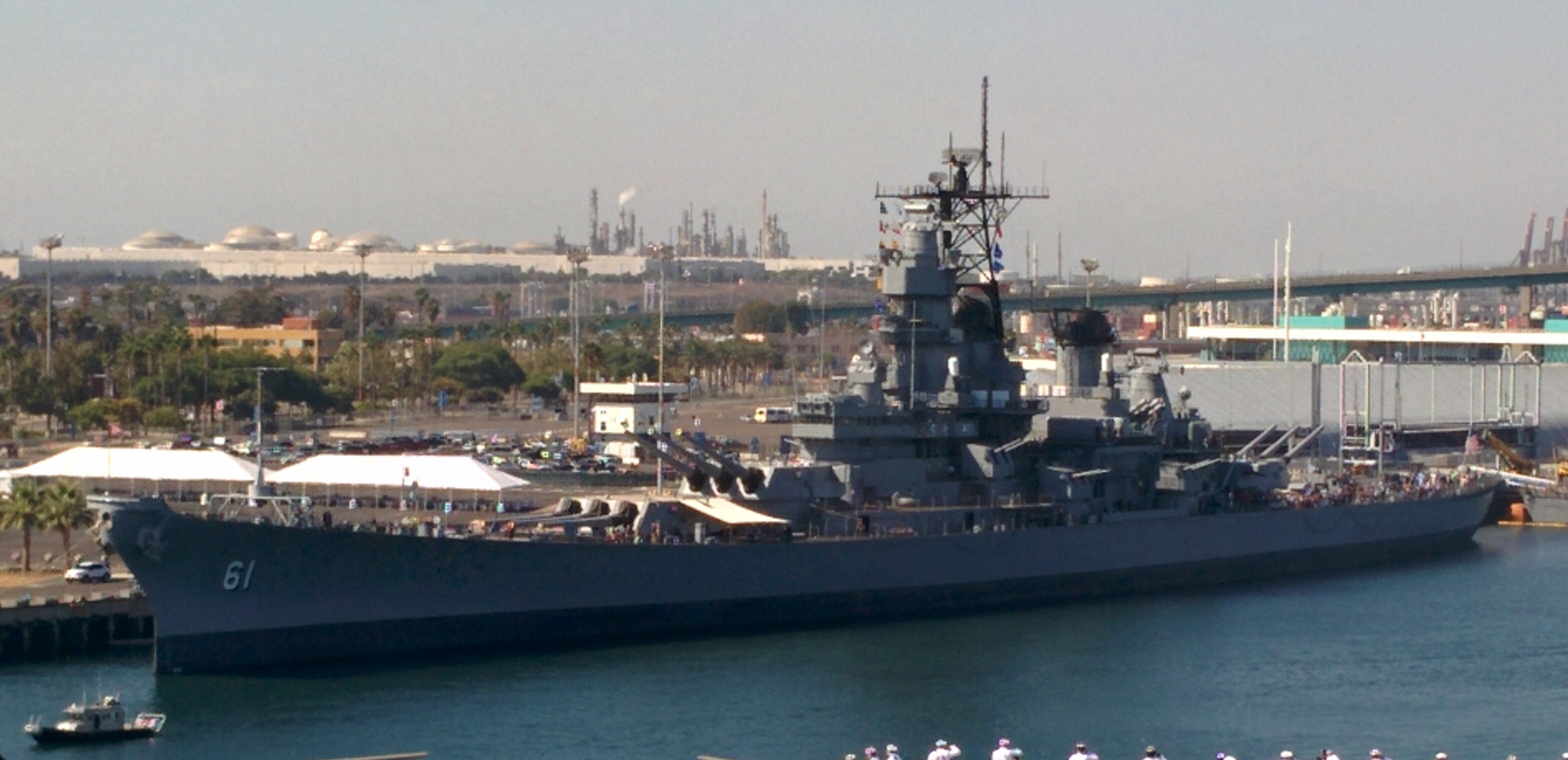
A closeup of Iowa
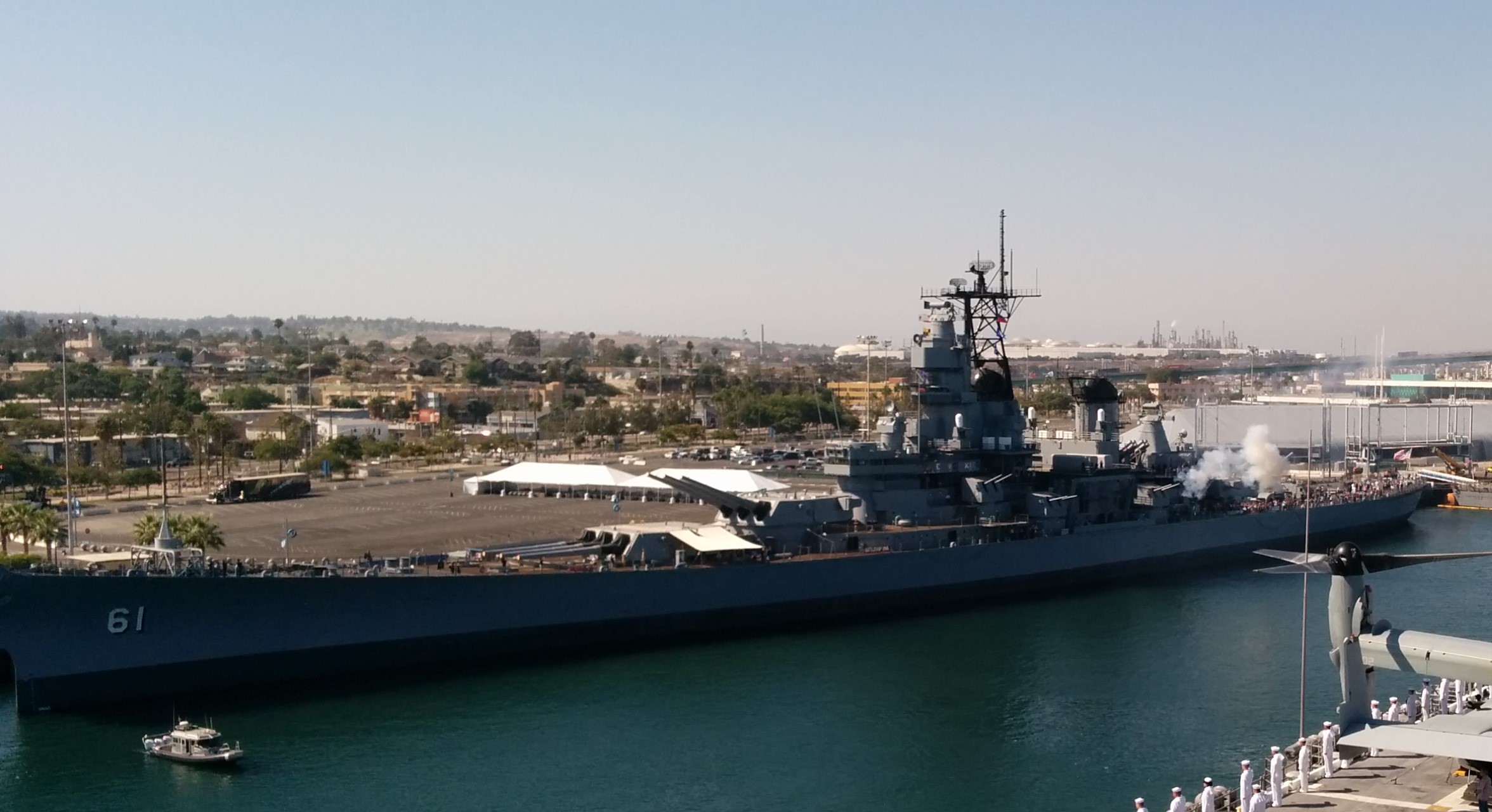
Iowa saluted us with her 5" guns. It was seriously loud, even at the distance we were at.
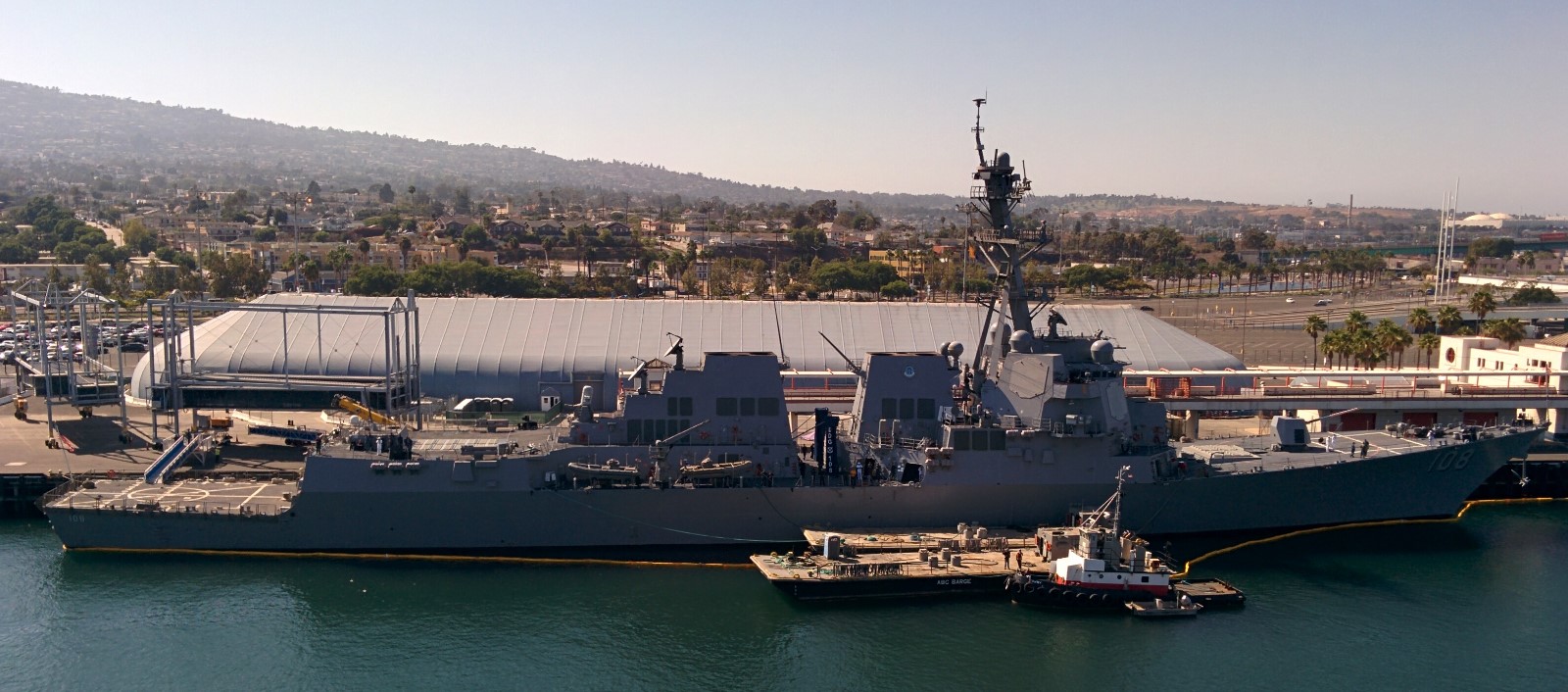
A closeup of the Meyer
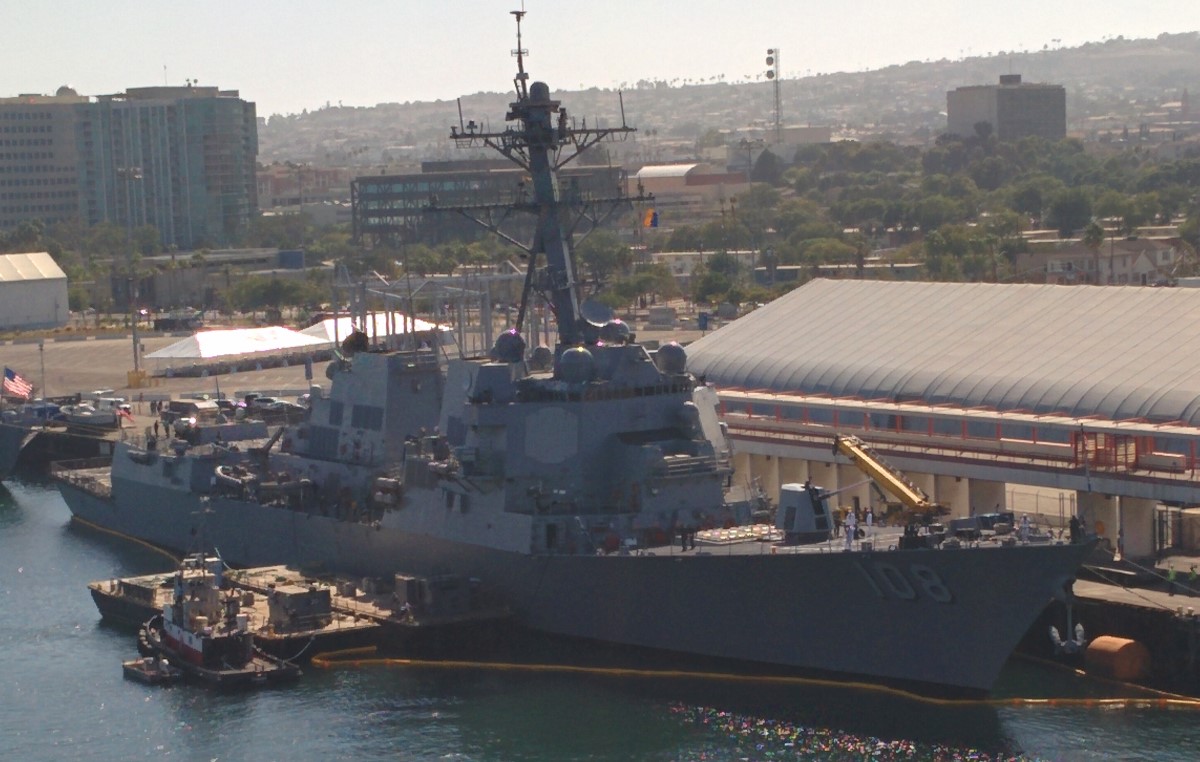
Another angle of the Meyer
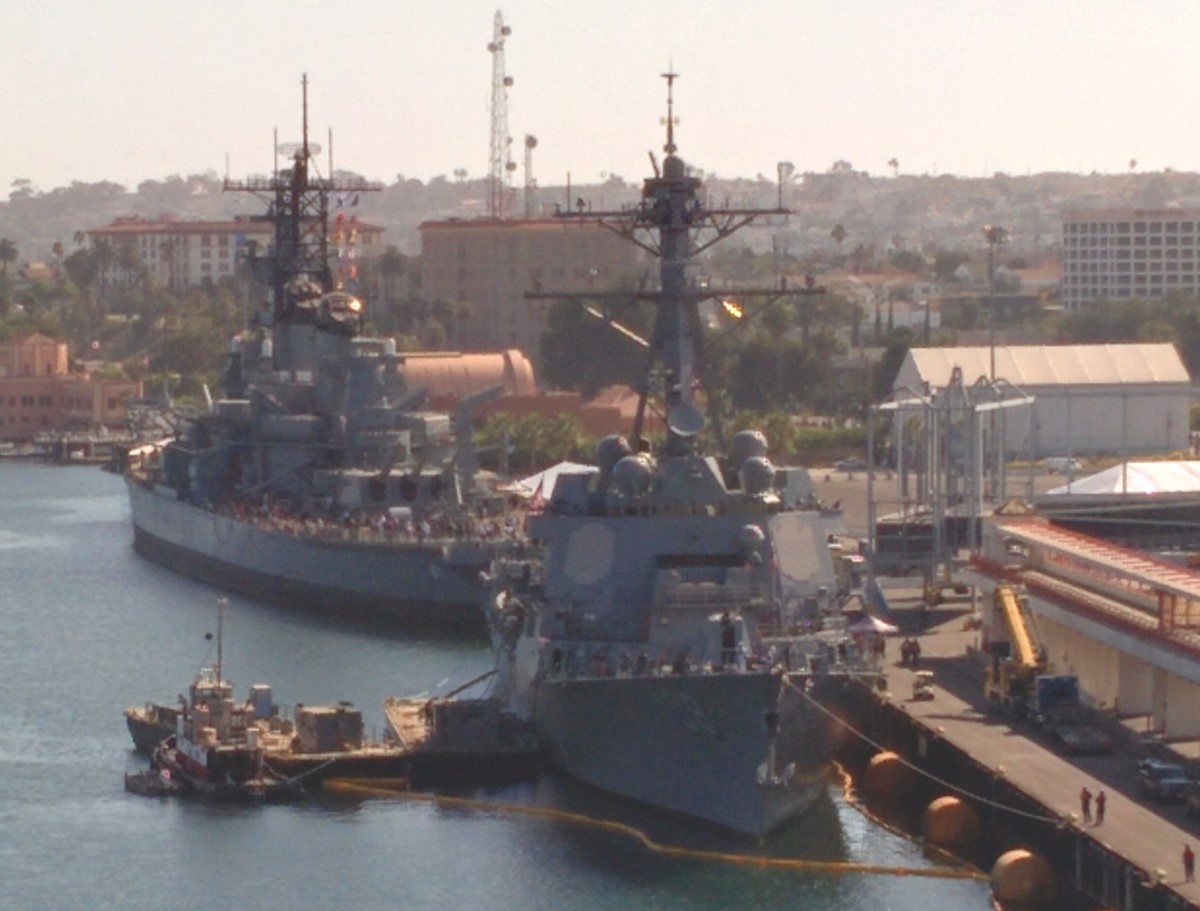
Iowa and Meyer together again
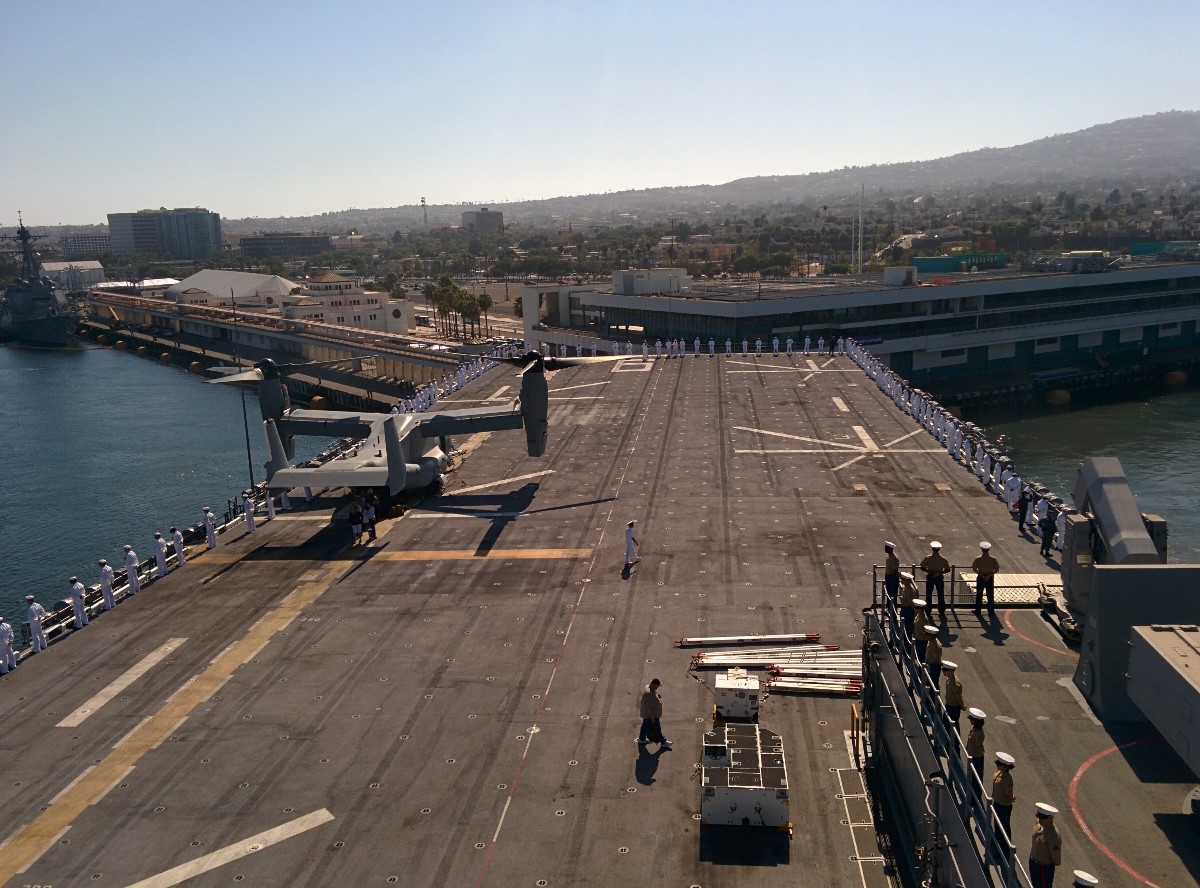
A view forward as America was turning around
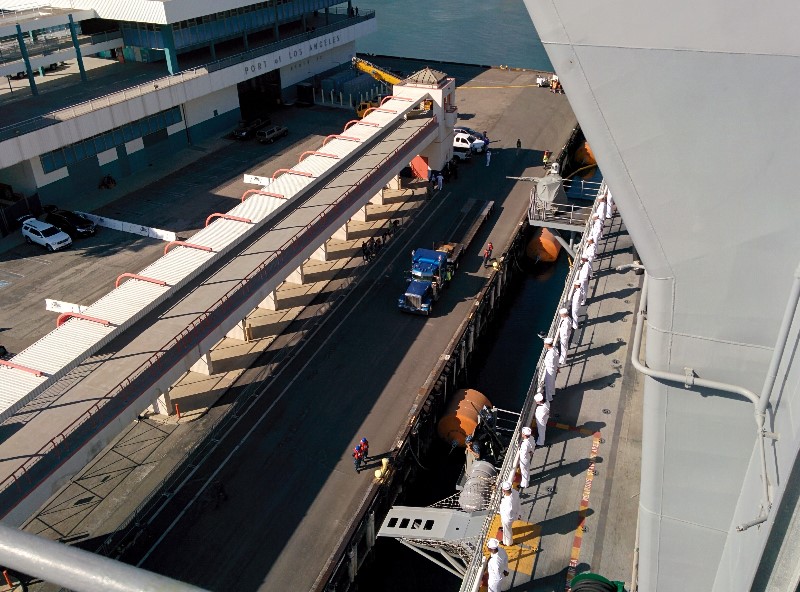
The ship's crew tying up
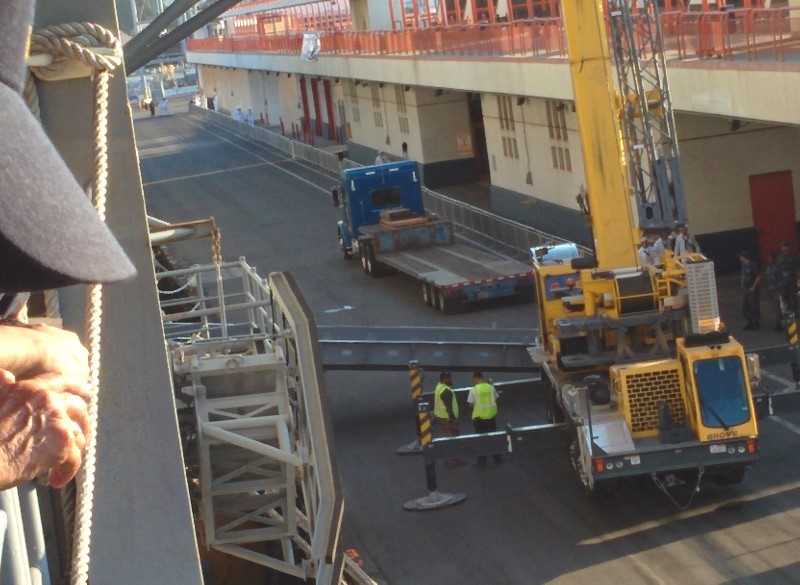
The gangplank being put in place
The gangplank was brought on the elevator from San Diego with us, and it took a full hour after we tied up for them to get it into place, and for us to get off the ship. By that point, I was hot and tired, and realized that it would have been faster to send us ashore via helicopter.
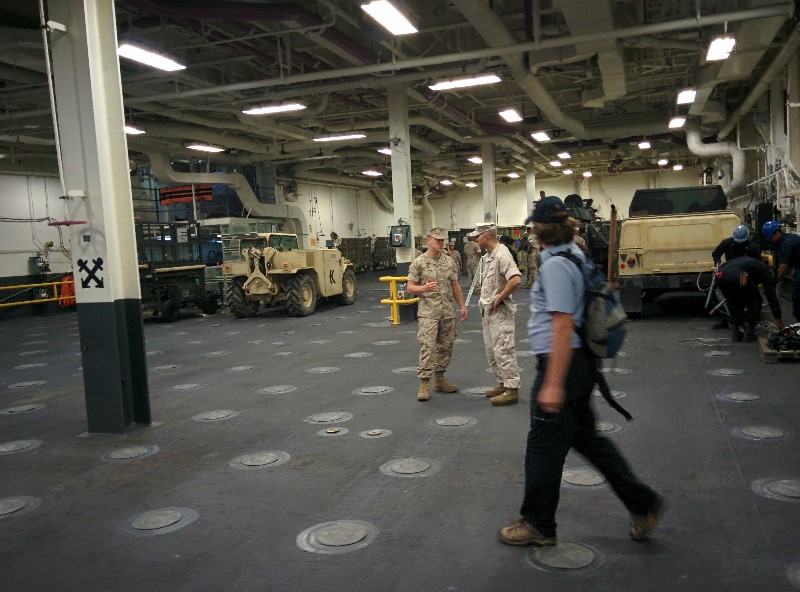
America's vehicle deck
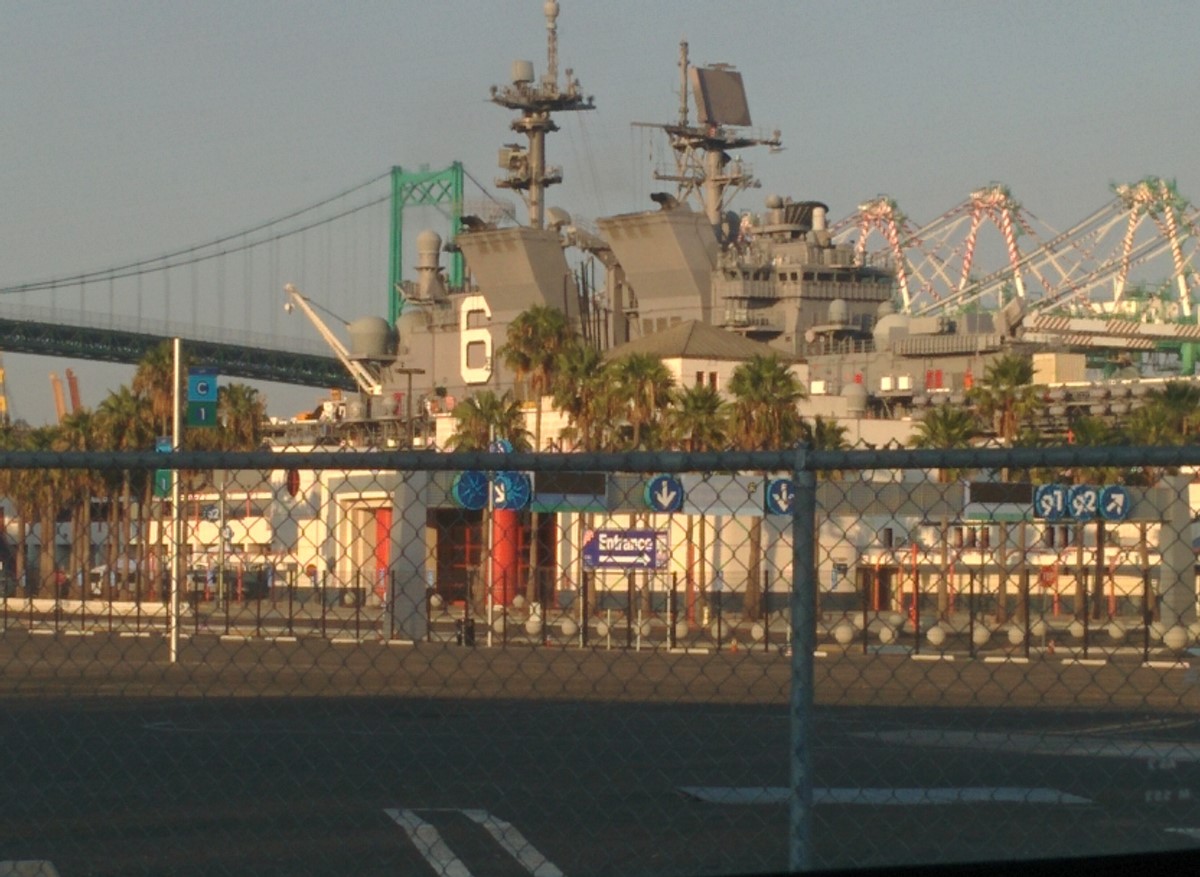
My last view of America, as I waited to get out of the parking lot3
I finally got home around 1915, exhausted but exhilarated. I didn't learn that much, but it was cool to get to see it all for real. I returned to San Pedro a few days later, on the Saturday of Fleet Week, and got to tour the Meyer.
1 As before, all pictures mine unless mentioned otherwise. ⇑
2 For obvious reasons, most military airplanes have low-visibility paint schemes. Each squadron traditionally has one airplane painted in a much prettier, and more visible, paint scheme. ⇑
3 The payment system broke down, stranding us all for 15 minutes or so. It was seriously irritating, but they finally let us go without paying, which kind of made up for it. ⇑

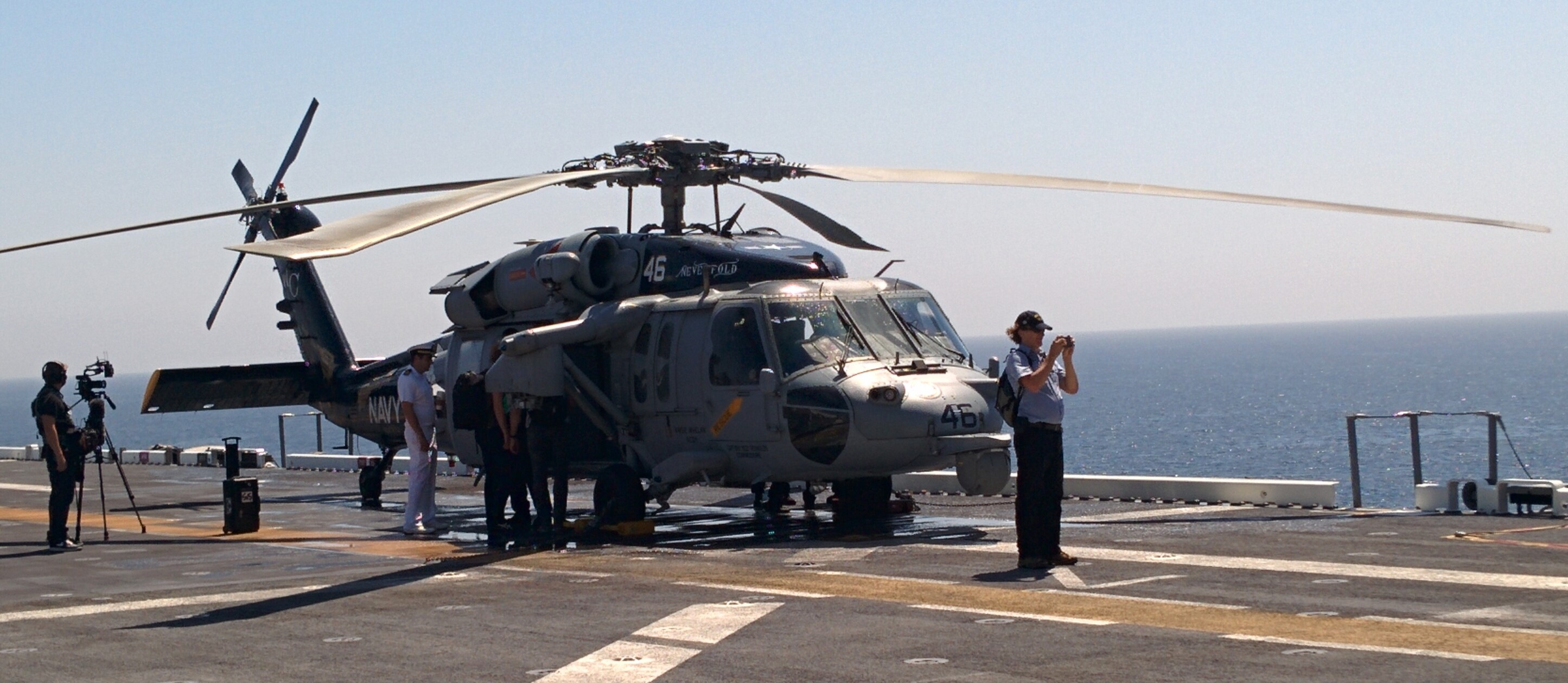
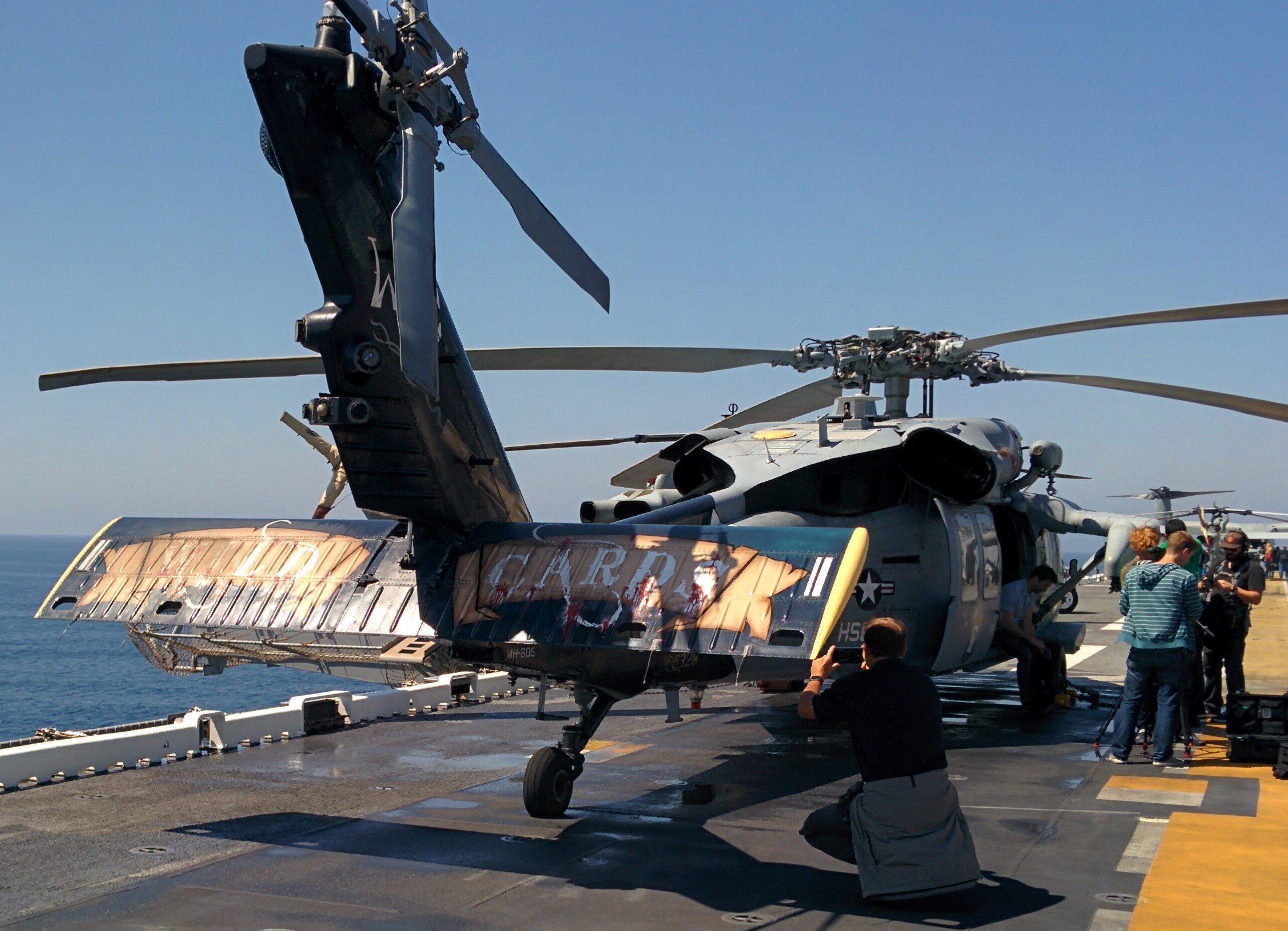
Comments
Nice post, man. Makes me want to get a bigger sailboat.